ASHEVILLESYMPHONY SYMPHONY











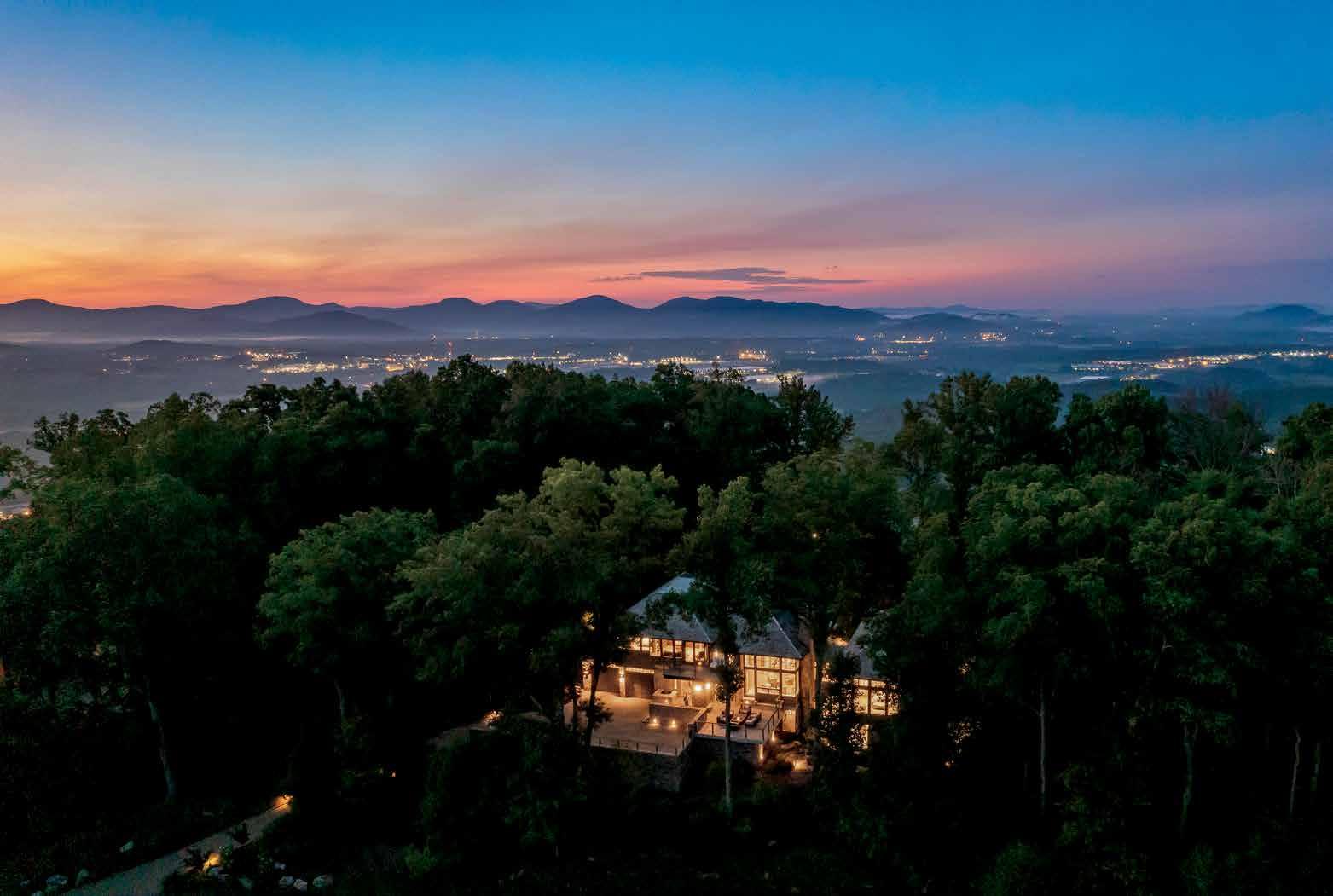
USE COUPON CODE 'SYMPHONY'

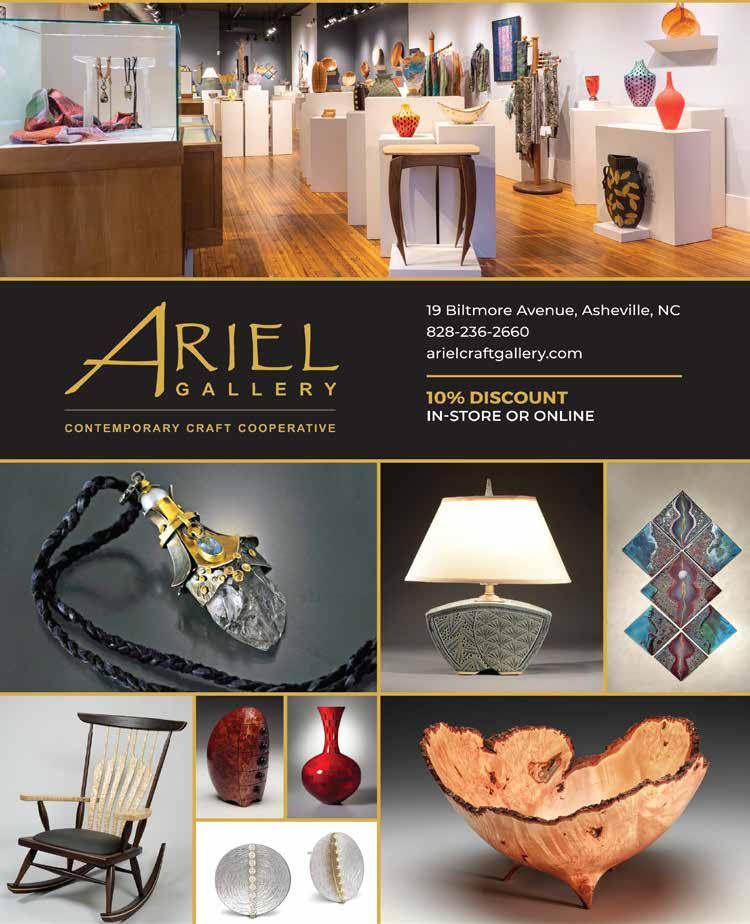



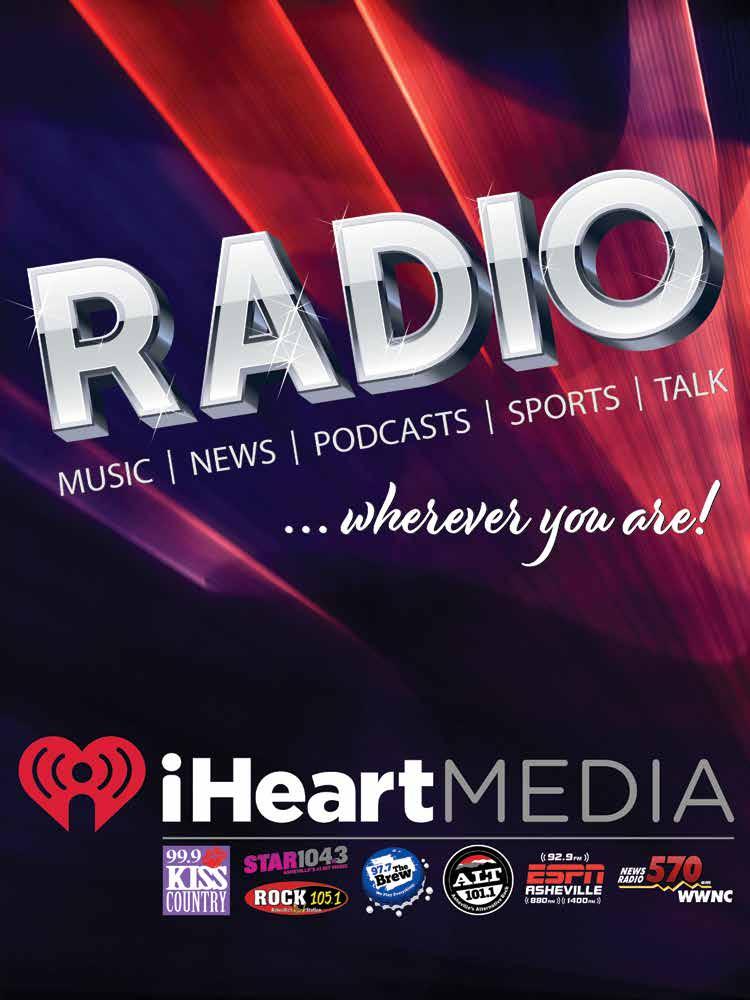

Dear Asheville Symphony friends and family,
Welcome to an extraordinary and unprecedented Asheville Symphony season! Already one of creativity and resilience, we are grateful for your unwavering support as we’ve faced the need to unexpectedly relocate the 2023-2024 season from Thomas Wolfe Auditorium.
I want to thank the Symphony’s staff, musicians, Board of Directors, and community partners who enabled us to pivot the season quickly and with grace. We are especially grateful to the teams at First Baptist Church of Asheville, Brevard Music Center, Wortham Center for Performing Arts, and Salvage Station, all of whom have welcomed us with open arms. In addition, I want to thank the team at Harrah’s Cherokee Center - Asheville for their transparency and flexibility as we worked to transition our season.
This outpouring of support has shown that your Symphony is a true part of the fabric of Asheville’s arts and culture community — and while we may not know the future of Thomas Wolfe Auditorium, we do know that it is possible for the Symphony to continue to thrive, even without a truly permanent home.
Transitioning our season has given us an opportunity to reaffirm our commitment to our mission, which is to serve, delight, and educate the people of Western North Carolina through symphonic music. Consequently, we are continuing to expand our reach and impact by increasing our pops programming, offering new music education opportunities, and even launching a brand new initiative through the Asheville Symphony’s first-ever Artist Residency, which for its inaugural year will celebrate the impact and legacy of the violin.
While we are proud that we remain able to present the 2023-2024 season despite the loss of our home venue for the last five decades, this shift has not been accomplished without significant effort and expense. In order to continue serving our audience, we must nearly double our number of performances, which requires additional staff to manage the expansion. And, by adding repeat performances and altering our rehearsal schedule significantly, our artistic costs have risen by over 20% in order to compensate our musicians and soloists fairly. The financial impact of this transition will be enormous.
This is a pivotal moment for your Asheville Symphony, and we need your support more than ever. Whether that means purchasing a subscription, donating for the first time, increasing your giving, or telling your friends about our shows, now is one of the most important times in the Symphony’s history for you to engage and help us weather these challenges. Your ambassadorship enables us to continue shaping the vibrant tapestry of our community.
Thank you for your support, and we look forward to seeing you this season!
Warm regards,
 Daniel M. Crupi Executive Director
Daniel M. Crupi Executive Director
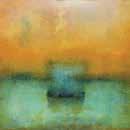
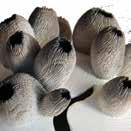

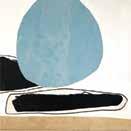


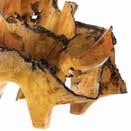
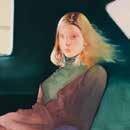





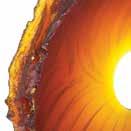
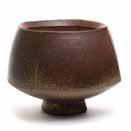
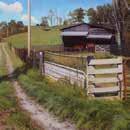
Sue Luther • President
Michael Andry • Past President
Sallie Broach • Secretary
G. Edward Towson • Treasurer
DIRECTORS
Jack Anderson*
Michael Andry
Thomas C. Bolton*
Sallie Broach
Susan Harrington Butts
Dr. John Cuellar
George Dambach
John W. Ellis
Dr. Bolling Farmer
Betty Fox
Adarrell Gadsden
Bill Gettys*
Debbie Green
Fred Groce
Mary Kirby
*Distinguished Directors
Pam Lowe-Hoyte
Sue Luther
Elizabeth McCorvey
Carol McCollum*
Patrick O’Cain
Jeffrey Owen
Cristian Rubiano
Richard Schaffer
Rachel Sossoman
James S. Thompson
Sandra Tompkins
Ed Towson*
Sarah Van Gunten
Olivia Zahler
(continued on next page)
SYMPHONY STAFF
Daniel M. Crupi
Executive Director
DEVELOPMENT
Sara Henley
Director of Development
Madeline Womack
Assistant Director of Development
Dana Alward
Development Associate
FINANCE
Sherry Blakely
Controller
MARKETING
Alex Hill
Director of Marketing & PR
Claire M. Allen
Art Director
ORCHESTRA OPERATIONS
Sally J. Keeney
Orchestra Manager
Michael Di Trolio
Principal Librarian
Paul Stroebel
Stage Manager
PATRON SERVICES
Hannah Williams
Patron Services & Festival Manager
Matt Howe
Ticketing & Office Administrator
Laura Berry House Manager
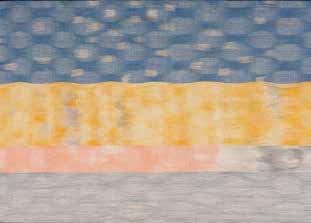
SELECTED IN COLLABORATION WITH
YOUTH ORCHESTRA
Cynthia Roop
General Manager
Dr. Alexandra Dee
Music Director, Youth Philharmonic & Concert Conductor
Dilshad Posnock
Woodwind & Honors Coach
Franklin Keel
Strings & Honors Coach
Dr. Jason Slaughter
Brass & Honors Coach
Dr. Brian Tinkel
Percussion Director
Judah Barak
Honors Percussion Coach
Jared Dunn
Honors Percussion Coach
Amber Svetik
Overture Class Conductor
Ashlee Booth
Divertimento Conductor
Amanda Tant
Sinfonia Conductor
Cheryl Lewis
Operations Manager
Rodney Workman
Site Coordinator
Jason Posnock Advisor
Cara Jenkins Advisor
“IRISATION” BY AMY PUTANSU
32.5" x 40", Fiber — Handwoven Ondulé
Amy Putansu has been producing handmade textiles for over 20 years. Thread is her mark-making tool and dyes are her colorant in the fine and wearable textile art she makes by hand. Her current area of focus is the rare weaving technique of ondulé, with which she creates wall pieces using dyed fibers with textile paints and other methods for achieving abstract imagery on cloth. Amy’s textiles are in permanent museum collections in the US and China, and notable private collections across the United States. She is presently full time faculty at a college in western North Carolina in the department of professional craft.
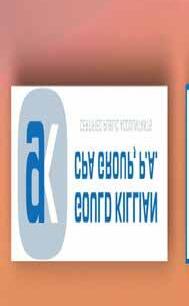

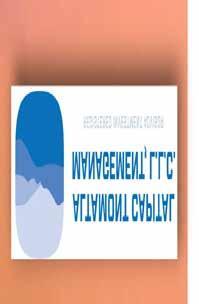



1962-1964: Gaylord Davis
1964-1966: Rudolf Gumpert
1966-1968: John W. Rutland
1968-1970: Robert K. Weiler
1970-1971: Robert Saenger
1971-1972: William C. Spencer, Jr.
1972-1975: John K. Knight
1975-1977: Lawrence D. Ford
1977-1979: Mortimer Ryon
1979-1982: James E. Dooley
1982-1984: J.K. MacKendree Day
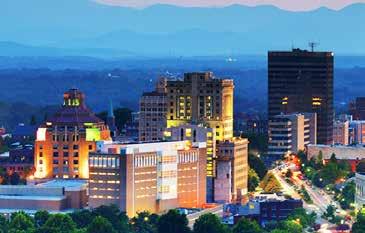
1984-1985: George Saenger
1994-1995: Stephen L. Barden, III
1995-1997: Joyce R. Dorr, Ph.D.
1997-1999: C. David Pheil
1999-2001: George M. Bilbrey, MD.
2001-2003: W. Herbert Smith, Jr.
2003-2004: James P. Topp
2004-2006: Thomas C. Bolton
2006-2008: Carol McCollum
2008-2010: Jack Anderson
2010-2012: Carolyn L. Hubbard
2012-2014: William L. Gettys
2014-2017: Irene Stoll



Dear Asheville Symphony friends and family,
On behalf of the Asheville Symphony musicians, management, and Board of Directors, welcome to our new season and new performance venues. This is the beginning of a new era for the ASO!
I am honored to serve as President and pleased to have the opportunity to work with the board, our talented staff, and devoted supporters. Through the partnerships we have in place throughout the community, we continue to extend the Symphony’s reach by helping fans of all ages experience classical music.
To our sponsors, advertisers, and donors, thank you for your support of our organization and for investing in the richness of our community through the arts. To our audience, thank you for joining us to share our love of music.
A special thank you to our talented Music Director Darko Butorac for his creative and thoughtful music selections and to our musicians for bringing each piece to life.
I am looking forward to another exceptional and exciting year ahead. I hope this season will stir your heart and bring you back again and again!



New venues, matinees, and more: the Asheville Symphony is “hitting the road” for the season!
The Harrah’s Cherokee Center - Asheville’s Thomas Wolfe Auditorium (our usual performance venue) experienced an HVAC failure and can no longer offer ticketed events for the foreseeable future. Thus, we have moved all shows to alternate venues including First Baptist Church of Asheville, Salvage Station, Brevard Music Center, and more. Our goal in this move has been to keep Asheville Symphony musicians fully employed and to change repertoire as little as possible. We are pleased that with the venue changes, we have been able to keep much of the originally scheduled season intact, continue serving our entire audience, and continue fully employing all of our musicians! We remain grateful for the support of our partners and audience as we have navigated these changes!
MASTERWORKS 1: OUT OF THE SHADOWS
First Baptist Church of Asheville
Saturday, Sept. 23, 2023, 2:00 p.m. + 8:00 p.m.
STAR WARS
Salvage Station's Outdoor Stage
Sunday, October 1, 2023, 5:00 p.m.
MASTERWORKS 2: THE GREAT GATE
First Baptist Church of Asheville
Saturday, Oct. 21, 2023, 2:00 p.m. + 8:00 p.m.
ALT ASO
Highland Brewing Tuesday, November 7, 2023, 7:00 p.m.
MASTERWORKS 3: AMERICAN PORTRAITS
First Baptist Church of Asheville
Saturday, Nov. 18, 2023, 2:00 p.m. + 8:00 p.m.
NEW YEAR’S EVE: SHE'S GOT SOUL
Harrah's Cherokee Center - Asheville Sunday, December 31, 2023, 8:00 p.m.
ALT ASO
The Orange Peel Tuesday, January 23, 2024, 7:00 p.m.
PIANO RECITAL WITH DAVID FUNG
Central United Methodist Church Tuesday, January 30, 2024, 7:00 p.m.
MASTERWORKS 4: CLASSICAL ROMANCE
Wortham Center for the Performing Arts
Saturday, February 17, 2024, 8:00 p.m. Sunday, February 18, 2024, 3:00 p.m.
ALT ASO
Asheville Masonic Temple Tuesday, March 12, 2024, 7:00 p.m.
VIOLIN RECITAL: SOLO BRAVURA
Central United Methodist Church Thursday, March 14, 2024, 7:00 p.m.
MASTERWORKS 5: VIOLIN VIRTUOSI
First Baptist Church of Asheville Saturday, March 16, 2024, 2:00 p.m. + 8:00 p.m.
MASTERWORKS 6: GOLDEN GLAMOUR
First Baptist Church of Asheville Saturday, April 20, 2024, 2:00 p.m. + 8:00 p.m.
MASTERWORKS 7: TITAN
Brevard Music Center Saturday, May 18, 2024, 2:00 p.m.
ALT ASO
The Mule @ Devil's Foot Beverage Co. Tuesday, May 21, 2024, 7:00 p.m.
A love of the arts and a sense of hospitality inspired George Vanderbilt’s masterpiece: Biltmore. Share in that legacy today by joining our Annual Passholder family.

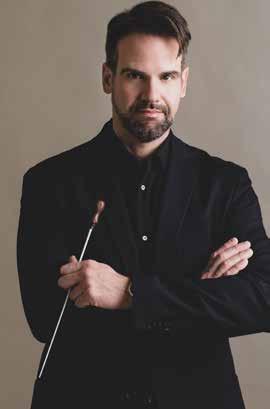
Praised by the Westdeutsche Zeitung for his “exceptional combination of passion, elegance and well-timed pacing”, Darko Butorac has established himself as a conductor in demand with orchestras both in Europe and the Americas. He currently serves as Music Director of both the Asheville Symphony and the Tallahassee Symphony Orchestra.
Notable guest conducting engagements include performances with the Deutsche Kammerphilharmonie Neuss and the Georgische Kammerorchester Ingolstadt (Germany), the Belgrade Philharmonic
(Serbia), the Tallinn Sinfonietta (Estonia), the Rubinstein Philharmonic of Lodz (Poland), the Xiamen Symphony (China), and the Slovenian Radio and Television Orchestra, among others.
He has appeared at such prestigious venues as the Vienna Konzerthaus, the Gran Teatro Nacional of Lima, Belgrade's Kolarac Hall, the Teatro Magnani in Italy, and the Tartu, Aspen and St. Olav summer music festivals. From 2009 to 2013 he served as the principal conductor of the Fidenza Opera Festival. In January he led the 2022 European Capital of Culture Opening Gala concert in Novi Sad, featuring clarinet virtuoso Andreas Ottensammer.
Distinguished collaborations include soprano Renee Fleming, pianist Garrick Ohlsson, tenor Lawrence Brownlee, cellist Colin Carr, and clarinetist Anthony McGill. He has also collaborated with banjo legend Béla Fleck, pop artists Ben Folds and Kishi Bashi, as well as Oscar-winning actor J.K. Simmons, among others.
Highlights of the 2023-2024 season include performances with pianists Olga Kern and Jon Kimura Parker, guitar sensation Jiji, as well as a festival celebrating the art of the violin curated in conjunction with Noah Bendix-Balgley, concertmaster of the Berlin Philharmonic.
As the Grand Prix Laureate and Gold Medalist of the Fourth International Vakhtang Jordania Conducting Competition
Butorac was invited to conduct orchestras across four continents. He was also selected to participate at the Bruno Walter National Conductor Preview hosted by the League of American Orchestras and the Jacksonville Symphony.
Butorac served as the Music Director of the Missoula Symphony from 2007-2019, marking a period of tremendous artistic growth of the orchestra. He challenged the ensemble with a broader repertoire leading to greater engagement with the community, and frequently sold-out performances.
Butorac is also in demand as a public speaker on leadership. His TEDx Montana talk on the “Language of Conducting” has over a 150K views on YouTube. He has appeared as a speaker on behalf of Brighthouse, a division of BCG, and was the headline speaker at the Birla International Leadership Summit in Bangkok in 2018.
He is an avid traveler, having visited almost seventy countries, and is passionate about discovering the world and bringing people together through the beauty of music.
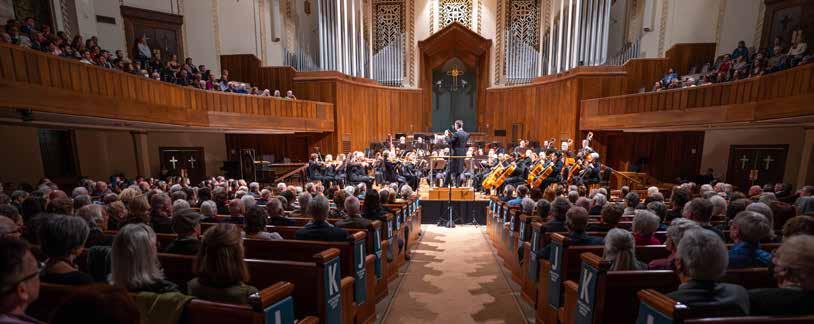
Open Chair • Concertmaster
Martha Gardner • Associate Concertmaster
⁺Lilly West • Assistant Concertmaster
⁺Taya Ricker • Principal Second Violin
Debra L. Anthony
Associate Principal Second Violin
⁺Alina Nelson
Assistant Principal Second Violin
Marianna Brickle
Teresa M. Curran
Elizabeth Fee-Elliott
Lori G. Hammel
Dorothy L. Knowles
Virginia Kowal
LuAda Malcom
Ruben Orengo
Mariya S. Potapova
Inez Hullinger Redman
Essena Setaro
*Paul E. Stroebel
VIOLA
Kara F. Poorbaugh • Principal
Jennifer Kozoroz • Associate Principal
Leigh Dixon
Martha L. Geissler
Gina Mashburn Heath
Karen Pommerich
Edward J. Smith
CELLO
Daniel Mumm • Principal
J. Franklin Keel • Associate Principal
Paul Maxwell • Assistant Principal
Cherylonda F. Fitzgerald
Paul S. GhostHorse
Katie Hamilton
Patricia Koelling Johnston
E. Sojeong Park
BASS
*M. Lee Metcalfe • Co-Principal
Vance M. Reese • Co-Principal
Michael Di Trolio
Matthew P. Waid
Lissie J. Shanahan • Principal
Kellie Henry
PICCOLO
Dilshad B. Posnock
OBOE
Alicia Chapman • Principal
*Cara Mia Jenkins
ENGLISH HORN
Amanda J. LaBrecque
CLARINET
Harry H. “Chip” Hill • Principal
Karen Farah Hill
BASS CLARINET
Shannon Thompson BASSOON
Michael J. Burns • Principal
Amber Ferenz Spuller
CONTRABASSOON
William L. Peebles
HORN
Jeffery B. Whaley • Principal
*Michael L. Brubaker
Anneka A. Zuehlke
Travis A. Bennett
TRUMPET
T. Mark Clodfelter • Principal
⁺Christopher Underwood
⁺William Stowman
TROMBONE
Justin Croushore • Principal
L. Rienette Davis
BASS TROMBONE
Jeremy Marks
TUBA
Bethany Wiese • Principal
TIMPANI
Todd D. Mueller • Principal
PERCUSSION
Caleb Breidenbaugh • Principal
Matthew Richmond
*Brian Tinkel
Michael Morel
HARP
Open Chair • Vetust Study Club Chair
KEYBOARD
Open Chair • Susanne Marcus Collins Chair
Your support of the Asheville Symphony Society’s endowment is the ticket to a secure, stable financial future for your Symphony. Consider endowing your favorite instrument in perpetuity! To learn more about endowment, please contact the ASO's Development Department at development@ashevillesymphony.org or 828.254.7046.
Michael Di Trolio • Principal Librarian
Paul Stroebel • Stage Manager
* Orchestra Committee Member
⁺ One Year Appointment
Section string players are listed alphabetically. (loa) = Leave of Absence
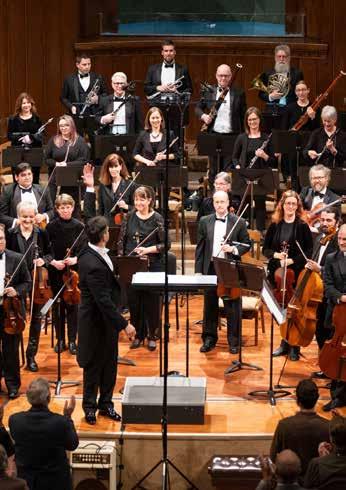
Thank you to our incredible Musician Hosts! Their generosity and warmth creates a welcoming home-away-from-home for our traveling musicians. Thank you for being an integral part of the Asheville Symphony community!
Linda and Tom Bushar
Georgia Case
Sylvia Cassel
Patty and Gary Coleman
Wendy and John Cuellar
Teresa Curran
Kathy and George Dambach
Sharron Davis
Sharon and Roger Eschroeder
Adarrell Gadsden
Clair Griffith and Geoffrey Mitchell
Suzanne and Steven Hageman
Mary and Peter Holmes
Stan Ingber and Laura Robbins
Pam and David Lane
Jill and Joe Lawrence
Robin and Cliff Lively
Sue and George Luther
Carol and Hugh McCollum
Jennie and Chafin Rhyne
Janet Thatcher
Connie and Gary Wald
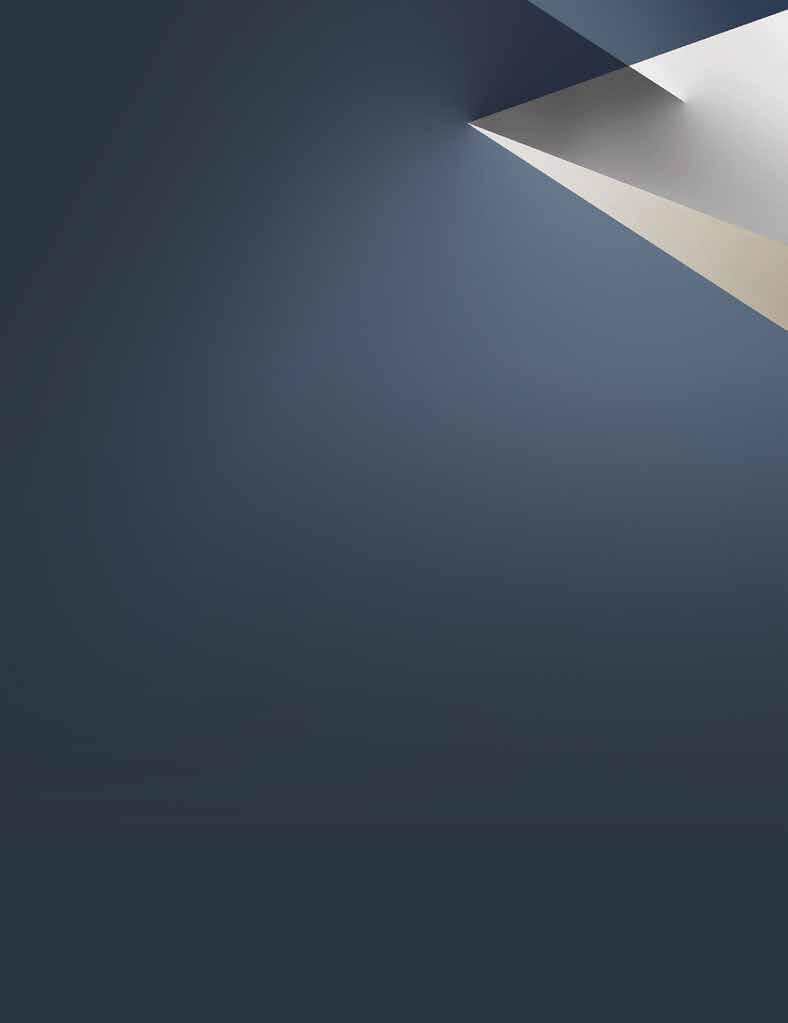
MorganStanley PrivateWealthManagement IsProudToSupport AshevilleSymphony
MichaelAndry FamilyWealthDirector SeniorVicePresident PrivateWealthAdvisor
500CollegeStreet Asheville,NC28801 +1828250-8744
Michael.andry@morganstanley.com TheAndry-HarrisGroupatMorgan StanleyPrivateWealth Management NMLS:663185
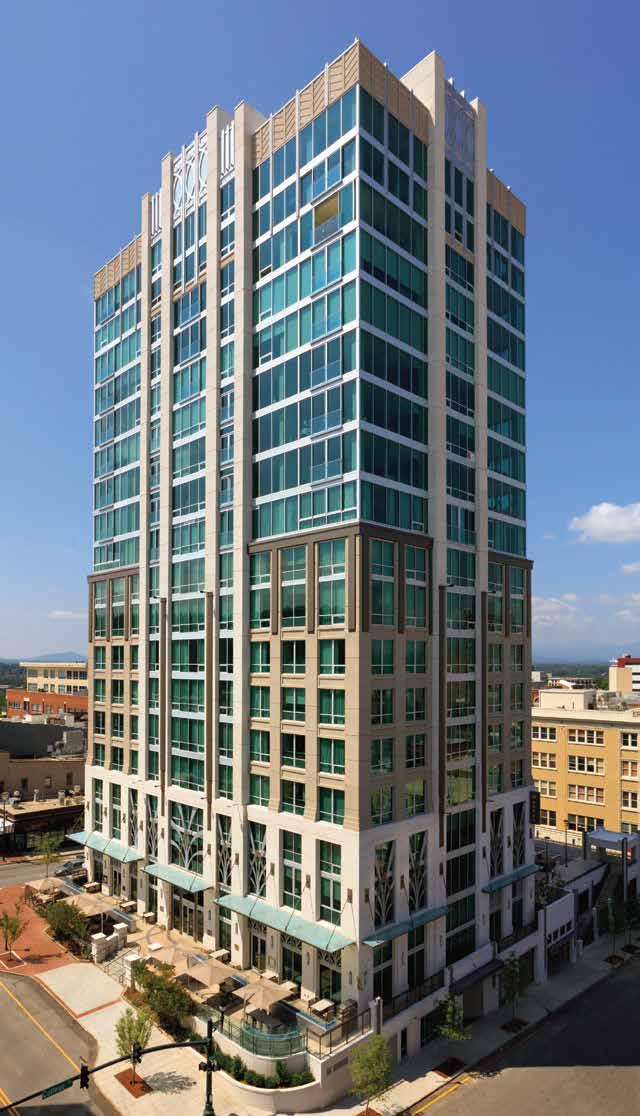


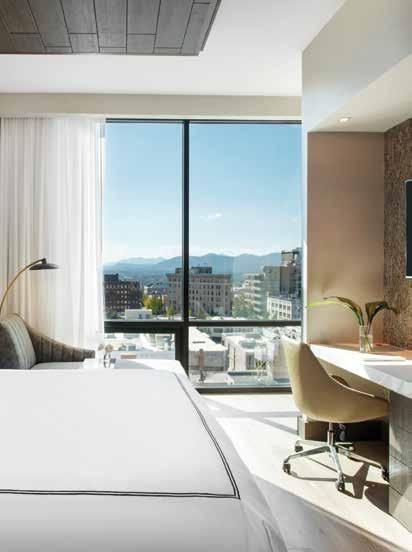
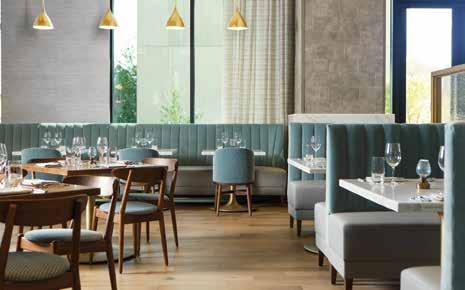
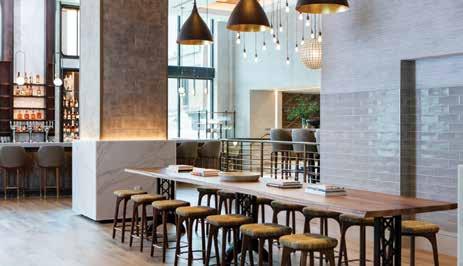

The Asheville Symphony Guild proudly supports the Asheville Symphony and Asheville Symphony community initiatives through volunteer support and fundraising. For over 50 years, the Guild has worked as a volunteer organization providing numerous ways for members to contribute to the community, share a mutual love of music, and make a difference in the lives of children through support of music education programs.
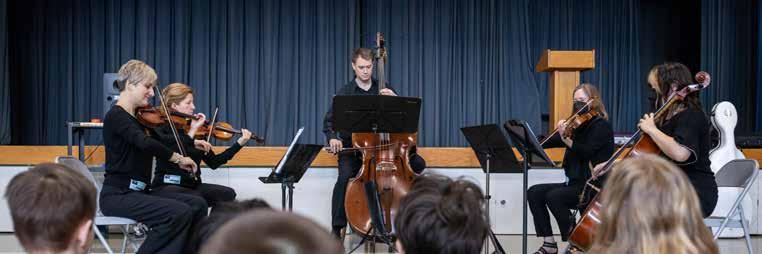



The Asheville Symphonettes is a high school girl’s service group that has been serving the Asheville area since 2011. The Symphonettes forge lifelong friendships and collaborate to better their community while experiencing live symphony concerts and developing a love and appreciation of music. Last season, the Symphonettes served as ushers for the Asheville Symphony, helped organize for a blood drive, paired up with the Asheville Symphony Guild to put on the “Pass the Hat” fundraiser, and more.
For Symphonette membership or funding inquiries, please contact Erin Renfro at erinrenfro@gmail.com.
MUSICAL FEASTS: YOUR SOCIAL AGENDA AWAITS!
From garden parties to barbecues to elegant evenings — join the Guild and experience these fun Musical Feasts while supporting our Symphony!
The Guild introduces thousands of elementary school children to classical music each year through the Music in the Schools program. The Guild also helps support our wonderful Asheville Symphony Youth Orchestra.
GUILD GATHERINGS: SHARE THE LOVE!
From our Fall Potluck to the annual May Gathering, Guild members enjoy getting together to share their love of music and our wonderful Symphony.
If you love music and want to form a deeper connection to the Asheville Symphony, your community, and your peers, we invite you to join the Guild today! For more information and to join, visit AshevilleSymphonyGuild.org or scan the QR code.



The Asheville Symphony Chorus (ASC) seeks to enrich and inspire our community through impactful performances of the masterworks of choral music. Under the direction of Conductor Kyle Ritter, the ASC invites you to take part in their 32nd season.
FEBRUARY 17 AND 18: CLASSICAL ROMANCE WITH THE ASHEVILLE SYMPHONY
Haydn
St. Nicholas Mass
Hummel Trumpet Concerto Mozart Symphony No. 40
The Asheville Symphony Chorus will present its spring concert in April 2024. Visit ashevillesymphonychorus.com or follow ASC on Facebook and Instagram @ashevillesymphonychorus for details and tickets.
Do you love to make music? Consider joining the Asheville Symphony Chorus! Go to www.AshevilleSymphonyChorus.com for audition information.































































































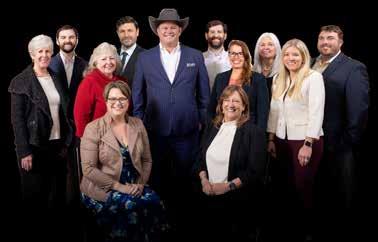

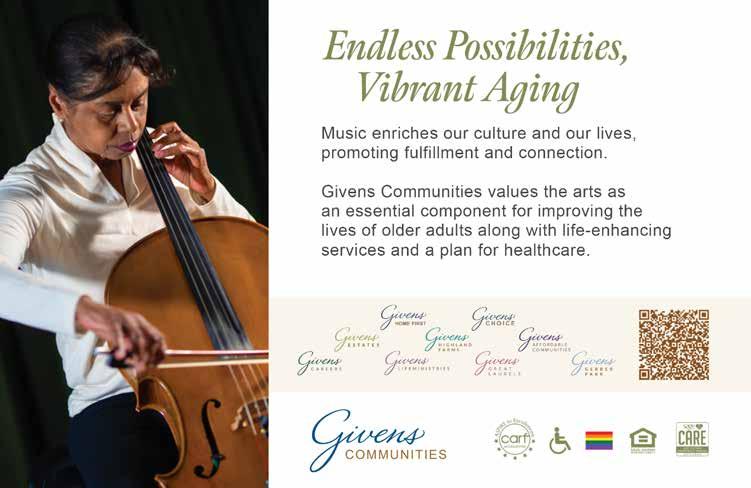
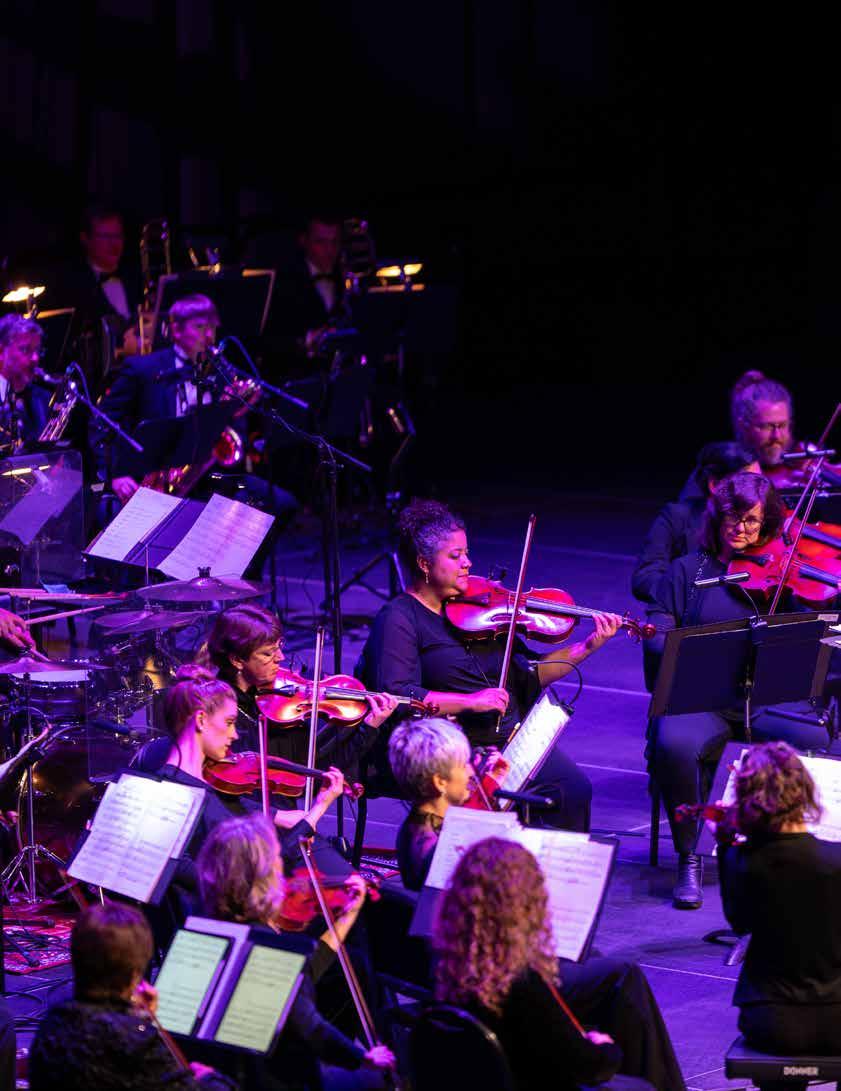
“The Asheville Symphony is a treasure. Not only is it currently ‘punching above its weight’ artistically, but it enriches the cultural fabric of the region, serves as a vital catalyst for economic growth, tourism, and community pride, and makes a critical contribution to the well-being and identity of Asheville.”
— SIMON WOODS President & CEO of the League of American Orchestras
“This is an incredible orchestra that the world needs to know about!”
— JENNIFER HIGDON Pulitzer Prize & Three-Time Grammy-Winning Composer
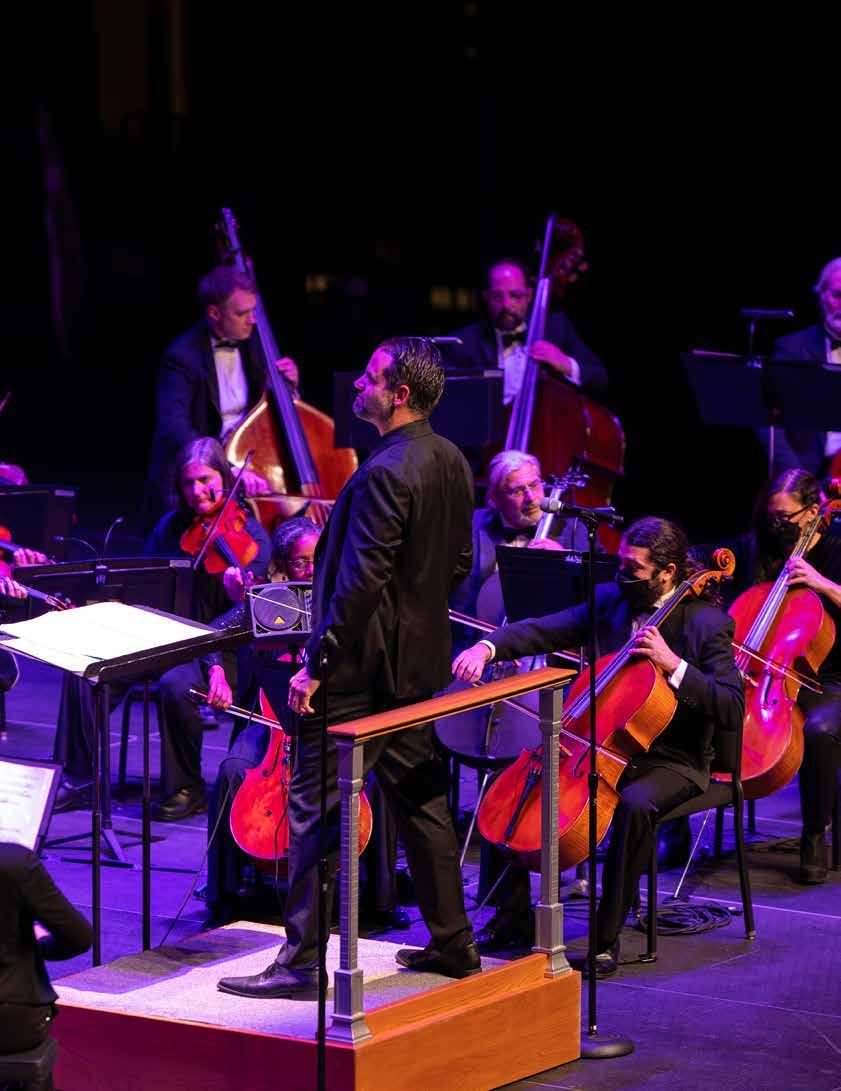


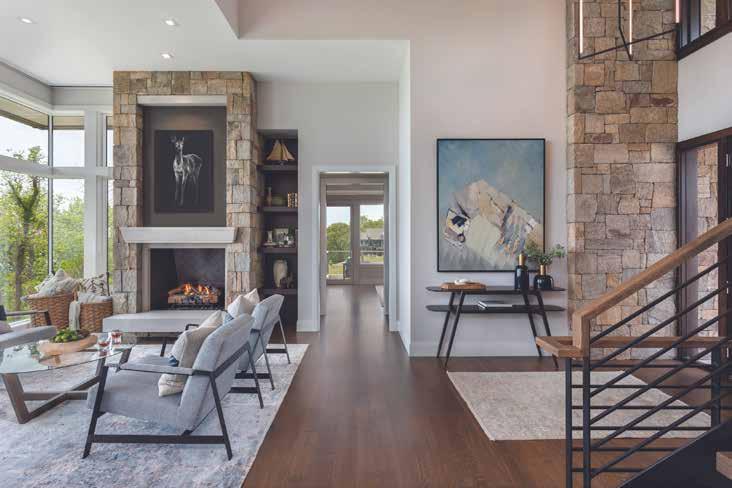



Wortham Center for the Performing Arts
February 17, 2024 at 8:00 p.m. February 18, 2024 at 3:00 p.m.
Indulge in a delightful evening of truly Classical music featuring Mozart’s Symphony No. 40, also known as the Great G-minor Symphony — which transcended the Classical era and inspired some of the great Romantics to come — accompanied by a trumpet concerto from Hummel, one of Mozart’s contemporaries and pupils. With Haydn’s St. Nicholas Mass, the Asheville Symphony Chorus returns for another collaboration with the Asheville Symphony to round out this all-Classical program.
Darko Butorac, Conductor Alisa Crüger-Cain, Trumpet
PREMIUM SEASON SPONSORS

1809)
Of Haydn’s 104 symphonies, a few stand out as much for the stories associated with them as for the quality of the music. Among these is the famous “Farewell” Symphony (No. 45 in F-sharp minor). In 1772, Haydn’s music-loving patron, Prince Nicholas Esterházy was apparently remiss about leaving his dank, partially completed summer palace in Esterháza and letting his court orchestra off to visit their families. When the musicians appealed to Haydn for help, the ever resourceful and diplomatic composer devised an addendum to the Finale of the symphony that did the trick. After a long pause, the tempo slowed to adagio with a new theme, the musical texture becoming thinner and thinner as the musicians, one by one, blew out the candles on their music stands and walked off the stage. As the harmonic richness gradually evaporated, the music became increasingly hollow and poignant until the last violinist just stopped, extinguished the last candle and departed. The Prince got the message.
But one should never ask favors – however well deserved – of a potentate without an equally obsequious demonstration of gratitude. Haydn quickly composed the Missa Sancti Nicolai in honor of the Prince’s patron saint; the manuscript even shows evidence of having been penned in great haste – but not so great that Haydn was unable to dip into his seemingly endless supply of clever tricks of the trade that made him one of the most innovative composers in music history.
The Missa Sancti Nicolai is one of the very few masses – and certainly the earliest known – to open with an ensemble of soloists, rather than with a choral Kyrie. The lilting Kyrie is followed by the text-heavy Gloria, which Haydn gets through in uncharacteristically short order. The centerpiece of the mass is a setting for the quartet of soloists of the section within the Credo of the Et incarnatus est, the summary of Christ’s birth, crucifixion, burial. The highly chromatic setting is replete with
grinding dissonances resolved in one suspension after another. Haydn finishes the Credo in short order by divvying up the text among the vocal parts to be sung simultaneously. This practice was not uncommon in a so-called missa brevis, or short mass.
Haydn slows the pace significantly in the Sanctus, especially for the Benedictus. He seems to have had a particular sensitivity for the text of the Benedictus – Blessed is he who comes in the name of the Lord – because nearly all of his masses leave a disproportionate amount of time there for lovely solo ensembles.
The three-part invocation of the Agnus Dei, Lamb of God, concludes with the words Dona nobis pacem, Grant us peace, but there remain in the manuscript only two of the invocations. Haydn scholar H. C. Robbins Landon posits that the composer may have intended the final invocation to be sung to the music of the Kyrie, thereby creating musical unity to the mass.
Johann Nepomuk Hummel (1778 - 1837)
Regarded now as a second-rank composer compared to his contemporaries Mozart, Beethoven and Schubert – all of whom he knew and worked with personally –Johann Nepomuk Hummel turned out to be the more successful than any of them in his own lifetime. Only Haydn, with his comfortable sinecure at the Esterházy court, could claim the similar combination of artistic acclaim and material wellbeing.
In a way, Hummel was a composite of all four of the above-mentioned composers. An astounding child prodigy and student of Mozart, he had an equally musical, pushy and ambitious father and was touring Europe as a piano recitalist at the age of ten. Perhaps alerted by the impoverished fate of his older contemporary, Hummel became the champion of copyrights in music publishing. By the time of his own
Franz Joseph Haydn
Missa Sancti Nicolai, Mass No. 6 in G major, Hob. XXII/6
I. Kyrie
II. Gloria
III. Credo
IV. Sanctus
V. Benedictus
VI. Angus Dei
(continued on next page)
Music Sponsors
Richard & Yolanda* Hall in memory of our son Rikki Hall
Shelia Elingburg & Bob Maxwell
Johann Nepomuk Hummel
Trumpet Concerto in E Major
Alisa Crüger-Cain, Trumpet
I. Allegro con spirito
II. Andante
III. Rondo, Allegro
Music Sponsors
Gail Jolley
Kitti Reynolds
Marla Woeckener
W. A. Mozart
Symphony No. 40 in G minor, K.550
I. Molto allegro
II. Andante
III. Menuetto: Allegretto
IV. Allegro assai
Music Sponsors
Brad & Diane Arnold in memory of Yolanda Hall
Adarrell Gadsden & Marcie Ownbey
Bill & Kitty Hunt
CONCERT SPONSOR

GUEST ARTIST SPONSOR
SEASON RADIO SPONSOR INTERMISSION
SEASON MEDIA SPONSOR
Media partner Blue Ridge Public Radio will air a recording of this performance, featuring conversations with ASO, on BPR Classic and bpr.org on Tuesday, March 12 at 7:00 p.m. and Thursday March 14 at 9:00 a.m.
death, he had amassed a considerable fortune as the result of good money management, business sense and savvy investments.
In 1804, upon the recommendation of the aging Haydn, Hummel acquired the position of Konzertmeister at the Esterházy estate where he essentially took over Haydn’s duties as Kapellmeister. But in 1811, he was dismissed, perhaps for not being as musically tractable as his mentor.
His relationship with Beethoven was not as fortunate. Possibly jealous of Beethoven’s dominance of the Vienna musical scene, Hummel fell out with the cantankerous Beethoven only to be reconciled with him on the latter’s deathbed.
Hummel was an admirer of Schubert but his music lacks the wrenching emotionalism found especially in Schubert’s later works. His own music represents the quintessence of the Classical style, possessing few of the more adventurous qualities of the new Romantics. His music fell quickly out of favor and little of it is performed today, with the exception of his brilliantly virtuoso works for solo clarinet and solo trumpet with orchestra.
In the late 1790s, trumpeter Anton Weidinger (1766-1852) developed a valve trumpet that extended the limited range of the natural trumpet, making it possible to play scales and chromatic passages over the entire range of the instrument. The aged Haydn was so taken by the innovation that that in 1796 he acceded to Weidinger’s request and composed his Trumpet Concerto for the new instrument. It was a resounding success and quickly became popular with audiences.
Capitalizing on his first triumph, Weidinger commissioned Hummel in 1803 for another trumpet concerto. At the time, Hummel was still at the beginning of his career and struggling to make ends meet. His concerto, premiered at the Esterházy estate on New Year’s Day, 1804, was successful as well, a popular showpiece for soloists. The Concerto adheres to the established form of the classic solo concerto: a majestic first movement in sonata-allegro form, a cantabile slow
movement, with the feats of virtuosity for the final rondo.
Amadeus Mozart (1756 - 1791)
When listening to any popular and wellknown piece of music, it is difficult to keep from being lulled into inattention by its sheer familiarity. And while we can never hear a 200-year-old work from the point of view of its original audience, it is useful to pretend, at least, to be hearing it for the first time.
Despite the fact that most modern listeners tend to regard the key of a work as irrelevant, musicians of the Baroque and Classical periods regarded certain keys as possessing specific emotive qualities, or “affects.” Minor keys in particular were fraught with emotional significance, and few symphonies in this period were written in minor keys. For Mozart, the key of G minor was the key of extreme pathos. He used it sparingly for some of his most heart-wrenching music: the String Quintet K.516; the Piano Quartet K.478; Pamina’s aria “Ach, ich fühl’s” from The Magic Flute; and, of course, the stormy so-called “Little G minor” Symphony (No. 25) K.183 written when he was only 17.
Mozart’s final three symphonies, nos. 39, 40 and 41, were written over a twomonth period in 1788, probably as part of a portfolio of new works destined for a series of summer concerts in Vienna. At this point his career was already in decline despite the modest success of his two great operas Don Giovanni and The Marriage of Figaro, written in collaboration with his brilliant librettist Lorenzo da Ponte. That is not to say that Mozart’s music was somehow denigrated or considered no longer pleasing; his published scores were selling briskly and his music was being performed all over Europe. It was almost as if there was a surfeit of Mozart – that he was too well known. And although he was in desperate need of funds to support his lifestyle, his legendary productivity faltered as well.
The three symphonies reflect very different moods, the darkest being that of No. 40. The opening theme of Symphony No. 40, with its hushed,
nervous introductory upbeat in the violas, sets the tone of urgency and anxiety that pervades the entire work. The second movement, Andante, begins serenely enough, it, too, turns dark and intense in the course of its development.
Even the Minuet, usually the most lightweight movement in a Classical symphony, is characterized by a series of phrases ending on successively higher and higher notes, ratcheting up the emotional tension. The Trio, at least, provides an emotional break, however slight.
The theme of the finale is a shrill arpeggio ending in a sighing appoggiatura, followed by a pounding motive in the orchestra that closes with an echo of the sigh in the lower register. Despite a lyrical second theme, the movement is in constant nervous motion. Finally, Mozart subverts the custom of ending symphonies in minor keys in the major, and stays in G minor to the end.
Program notes by: Joseph & Elizabeth Kahn www.wordprosmusic.com
Alisa Crüger-Cain, age 21, from Harvard MA, is a Junior studying trumpet performance under the tutelage of Michael Sachs and Michael Miller at the Cleveland Institute of Music. Previously she has studied with Vincent Monaco and Wolfgang Basch. In addition to joining the Asheville Symphony for Masterworks 4: Classical Romance, she recently performed the Hummel Trumpet Concerto in E-flat with the CIM Orchestra at Severance Hall.

She has placed in numerous prestigious competitions including first prize in the CIM concerto competition, first prize in the International Women’s Brass Conference solo trumpet competition, third prize in the Jugend Musiziert Bundeswettbewerb, honorable mention in the Boston Symphony Orchestra Fidelity Investments Concerto Competition, first prize in the Tuesday Musical Association Competition, and first prize in the Phillips Academy Concerto Competition.
Recently she was a recipient of the International Women’s Brass Conference Mentorship program which gave her the opportunity to work with Marie Speziale. She has participated in masterclasses with Mark Gould, Philip Smith, Gabor Tarkövi, Christopher Martin, and John Abbracciamento.
She is an avid chamber musician and has attended summer festivals such as the Stockholm Chamber Brass Academy, the Atlantic Brass Quintet Seminar, Apple Hill Chamber Music Summer Workshop. This coming summer her brass quintet, Looking Glass Brass, has been invited to attend the Norfolk chamber festival at the Yale School of music on fellowship. She is also an experienced orchestral musician and has served as principal trumpet of the CIM orchestra, the Boston Youth Symphony Orchestra, and the Youth Philharmonic Orchestra of the New England Conservatory Preparatory program.
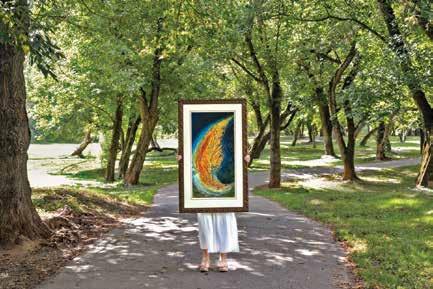

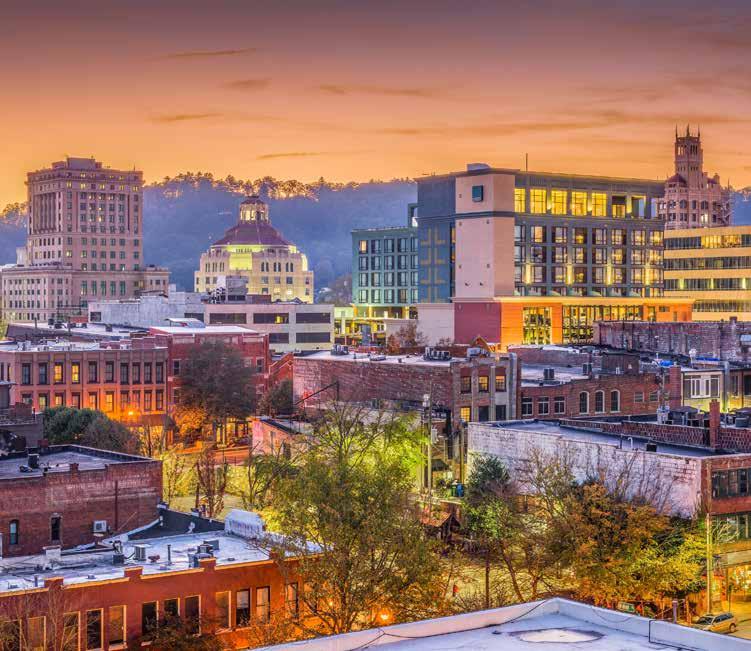

You can open the doors of opportunity for a local working family when you donate your car to Working Wheels.
The donation is tax-deductible.
The process is simple. The impact is real.
Call today (828) 633-6888 or visit workingwheelswnc.org to learn more
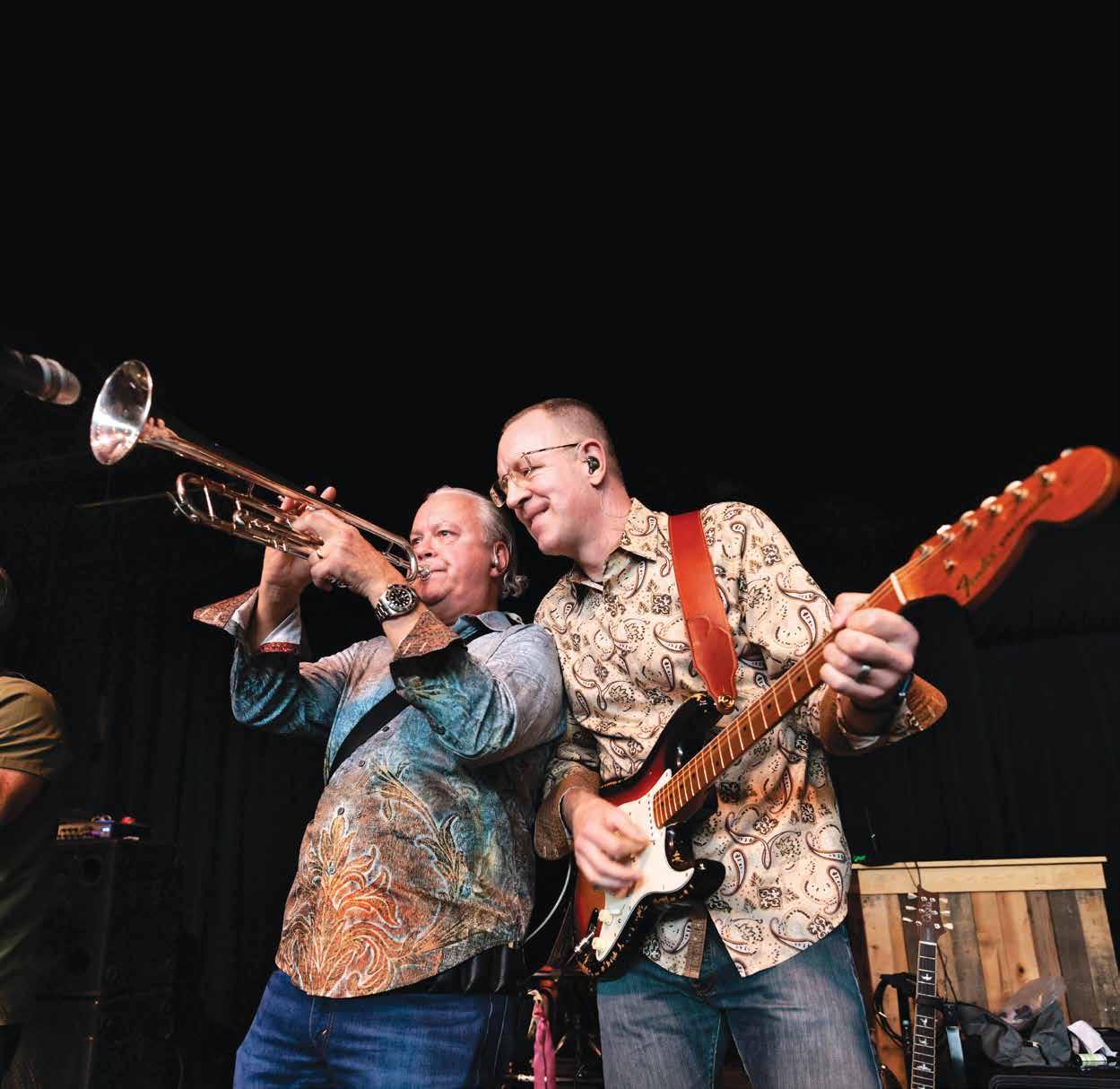
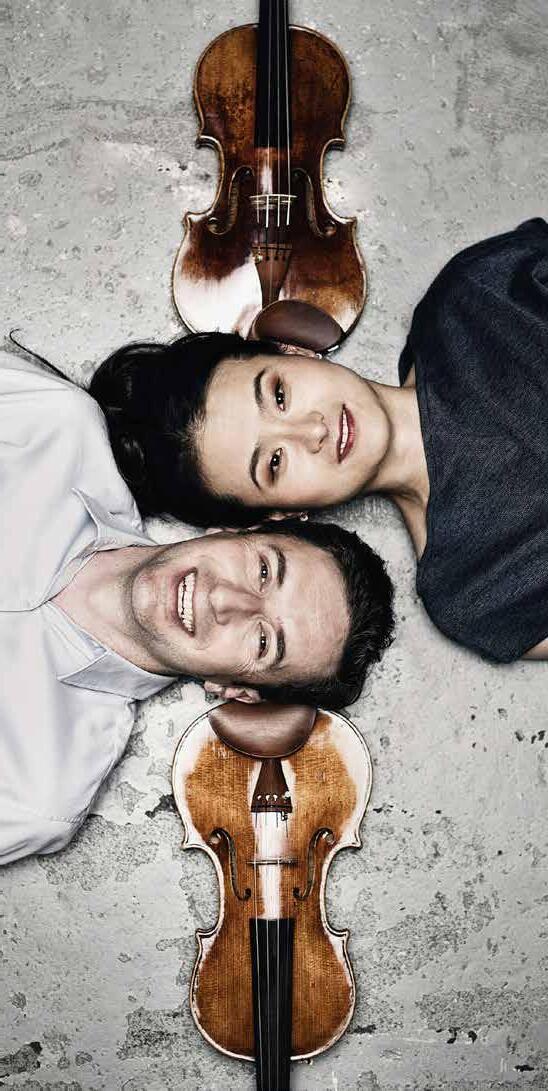
In March 2024, Asheville Symphony presents its first-ever Artist Residency, celebrating the impact and the legacy of the violin and featuring world-renowned violinists Noah Bendix-Balgley and Shanshan Yao.
Our biennial residency initiative honors and explores one musical instrument at a time in collaboration with a preeminent musical artist. Through an exploration of genre, instrumentation, solo performance and more, this weeklong residency concept offers programmatic content for a wide range of audiences with an emphasis on education. At each residency, Asheville Symphony audiences will discover new ways to appreciate and understand a musical instrument and its role in an orchestra.
The Asheville Symphony’s Artist Residency: A Celebration of the Violin will include a Masterworks concert, an ALT ASO concept, a solo recital, a student workshop, a historical lecture, and a performance with the Asheville Symphony Youth Orchestra. Whether you are a music student who is new to the violin or a longtime Symphony patron with a favorite violin concerto, the Artist Residency will deepen your insight and increase your esteem for this amazing instrument’s place in the musical canon.
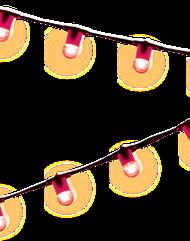

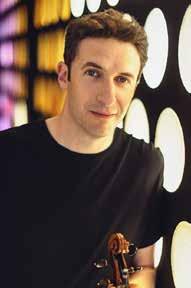
Visit AshevilleSymphony.org for more events!
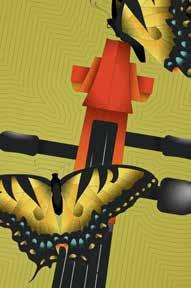

Asheville Masonic Temple
March 12, 2024, 7:00 p.m.
Folk, klezmer, jazz, fiddle, and classical music: Noah BendixBalgley presents a wildly varied program full of violin-centric works from just about every genre where you might expect to find a violin — and a few unexpected genres, too! On sale January 16, 2024.
Details on page 40.
Central United Methodist Church
March 14, 2024, 7:00 p.m.
Either a violinist’s dream recital or their worst nightmare, Bendix-Balgley takes the stage alone for a daunting program featuring a series of technical Everests for solo violin by Paganini, Bartók, Bach, and Corigliano.
Details on page 44.

Noah Bendix-Balgley, Violin
Masterworks 5: Violin Virtuosi
First Baptist Church of Asheville March 16, 2024, 2:00 p.m. and 8:00 p.m.
Husband and wife duo Noah Bendix-Balgley and Shanshan Yao headline an all-violin, all-concerto program featuring Butterfly Lovers, Bach's Double Violin Concerto, and the demanding Brahms violin concerto.
Details on page 50.
Born in Asheville, North Carolina, Noah Bendix-Balgley is First Concertmaster of the Berliner Philharmoniker — widely recognized as one of the best orchestras in the world. Noah enjoys a wide-ranging musical life as a violinist, touring both as a soloist and as a chamber musician. He began playing the violin at age 4 and played for Lord Yehudi Menuhin at age 9. He graduated from the Jacobs School of Music at Indiana University and the Munich Hochschule. A laureate of the 2009 Queen Elisabeth Competition, he also won top prizes at the Long-Thibaud Competition in France and the Postacchini Competition in Italy.
Shanshan Yao, Violin
Shanshan Yao, who joined the roster of the New York Philharmonic in 2013, will join Bendix-Balgley during the 2024 Asheville Symphony’s Artist Residency. As a soloist, Yao has performed with the Calgary Philharmonic Orchestra, the Sendai Philharmonic Orchestra, and more. She has won numerous competitions including the Calgary Concerto Competition and Morningside Music Bridge Concerto Competition and has degrees from the Curtis Institute of Music and The Juilliard School.
Asheville Symphony Youth Orchestra Performance with Noah Bendix-Balgley
First Baptist Church of Asheville March 18, 2024, 6:30 p.m.
Noah Bendix-Balgley takes the stage with our talented Youth Orchestra students, an exciting opportunity to hear Bendix-Balgley one last time during the Residency and for young musicians to perform with a world-renowned soloist and ensemble performer as their Concertmaster.
Bill & Nancy Gettys
Gerald & Nancy Kitch
Support this exciting initiative and gain exclusive benefits throughout the residency.
Learn more on the next page!
A typical Symphony guest artist spends 72 hours in each city they visit, limiting opportunities for connection with Asheville’s distinctive community and culture. By embedding a preeminent artist like Noah Bendix-Balgley in our city for a full week, the Artist Residency allows for engagement with middle and high school students, adult learners, and music lovers of all ages.
With your support, the Asheville Symphony is proud to expand our nationally recognized community engagement programs and looks forward to the Artist Residency in March 2024.
Your tax-deductible participation in the Artist Residency Circle makes this program more accessible and more meaningful: every student who participates in a workshop with Shanshan Yao or performs with Noah Bendix-Balgley as concertmaster will be cultivating his or her creative potential while developing meaningful life skills like listening and collaboration. Artist Residency Circle donors receive benefits like reserved parking and VIP seating.
Give to the Artist Residency today and make a lasting impact on the Asheville Symphony and the community we serve.
Learn more and join the Artist Residency Circle by visiting AshevilleSymphony.org/ Artist-Residency-Circle or by contacting the Development team at 828.318.8181 or development@ashevillesymphony.org.

We applaud the Asheville Symphony Orchestra for sharing one of life’s greatest treasures with our community.
“Where Words Fail, Music Speaks” – Hans Christian Andersen
The Brookshire Garside Group Private Wealth Management 828-239-8781 BrookshireGarsideGroup.com ©2023 Robert







Darko Butorac, Conductor Noah Bendix-Balgley, Violin
Folk, klezmer, jazz, fiddle, and classical music: violinist Noah Bendix-Balgley takes it all in stride and presents just about every genre where you could find a violin. Featuring Reinhardt, Vivaldi, and a variety of traditional tunes from klezmer, bluegrass, and beyond, this program brings ALT ASO to Downtown Asheville’s stunning Masonic Temple for a concert showcasing the incredible and bizarre range of violin styles. On sale January 16, 2024.
TUESDAY, MARCH 12, 2024 7:00 P.M.
SERIES PRESENTING SPONSOR

OFFICIAL AUTOMOTIVE COMPANY OF THE ASHEVILLE SYMPHONY

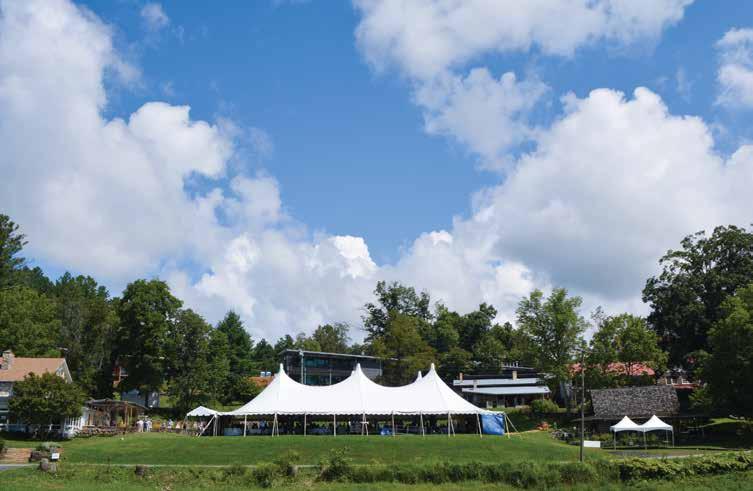

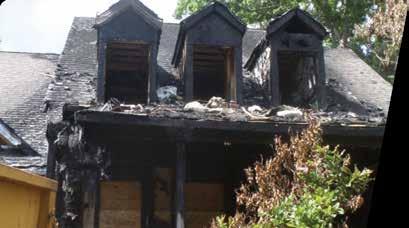


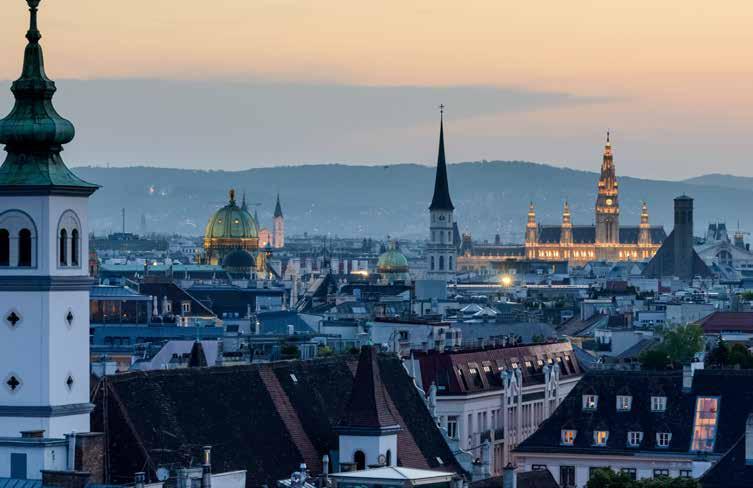
The Asheville Symphony Youth Orchestra is going on their first ever European Tour! Students will visit Salzburg, Vienna, and Prague with performances in two cities. We need your help to make it affordable for each student! To donate to the European Tour, make a donation to the Friends of the ASYO and write “tour” in the “Personal note to be included with donation” field! Visit AshevilleSymphony.org/Friends-of-the-ASYO or scan the QR code to make a donation today.

See your ad in the next Asheville Symphony Program Book! Our program book consists of advertisements from sponsors, paid advertisers, and even donated ad space. We distribute over 10,000 copies of the program book between September and May each season.
Interested in seeing your ad in the next program book? Email info@ashevillesymphony.org or call 828.254.7046 for more details on how to advertise or sponsor!
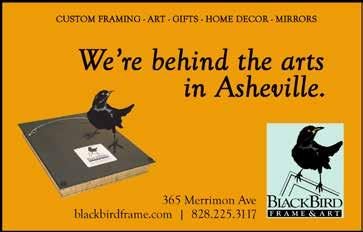

Central United Methodist Church March 14, 2024 at 7:00 p.m.
Either a violinist’s dream recital program or their worst nightmare: Noah Bendix-Balgley takes the stage alone for a solo violin program full of technical Everests. Spanning five centuries of violin masters, this daunting program begins with Bach’s formidable first violin sonata and one of Paganini’s most fiendish creations. Then we venture into the 21st century with John Corigliano’s “mistuned” bluegrass- and jazz-inspired solo piece written for scordatura violin. Finally, Bendix-Balgley tackles the “almost unplayable” work by Bartók, composed right here in Asheville.
Noah Bendix-Balgley, Violin
PREMIUM SEASON SPONSORS

J. S. Bach
Solo Violin Sonata No. 1 in G minor, BWV 1001
Music Sponsors
Dr. John & Wendy Cuellar
Johann Sebastian Bach (1685 - 1750)
Johann Sebastian Bach’s three sonatas and three partitas for solo violin present the ultimate technical and musical challenge for any violinist; among their most interesting aspects is Bach’s ability to create the sound of complete harmonies by judicious use of double stops and arpeggiated chords.
Bach composed the six works during his tenure as Capellmeister at the princely court of Cöthen (1717-1723), probably between 1717 and 1720, although they are based on earlier work from his Weimar period. The surviving manuscript in Bach’s hand dates from 1720. To judge from the many copies that have survived, including some by his second wife, Anna Magdalena, the works must have become popular even beyond Germany’s borders. That Bach probably used the six works as teaching tools is indicated by the detailed instructions for articulation given in his hand in the surviving manuscript. In spite of their popularity, the complete set did not appear in print until 1843.
It is unknown for whom Bach composed these works, but such technically demanding compositions for solo violin were not uncommon, especially in Germany where Bach’s older contemporary Heinrich Ignaz von Biber (1644-1704) composed the “Rosary Sonatas,” 12 works for solo violin representing the life of the Virgin Mary, each involving a different tuning of the instrument.
Although composed as a set of six, the three sonatas are all four-movement works (slow-fast-slow-fast) of the Sonata da Chiesa (Church sonata), where the second movement is a fugue and with tempo indications for the other movements. The three partitas are in the style of the Baroque dance suite and are more flexible in structure. In the Sonata No. 1, the third movement Siciliana is a gentle prelude to the wild Presto finale, a great challenge of violin virtuosity.
- 1840)
In the annals of classical music, few have elicited in their lifetime the kind of awe and mystique that surrounded every step in the life of violinist and composer Niccoló Paganini. His incredible technical ability epitomized to his contemporaries the ultimate in violin playing and was considered “miraculous and inconceivable” by a French competitor. While later generations of performers were able to master his technical feats, few could approach his incredible musicianship and emotional power.
As Friedrich Wieck, Clara Schumann's father stated: “Never did I hear a singer who touched me as deeply as an adagio played by Paganini...”
Paganini developed a totally new set of techniques for violin playing. One of his trademarks was the ricochet, in which he played a number of bouncing notes in a single bow stroke. He perfected the art of playing single-stop and double-stop harmonics, aided by thinner strings. He developed his own bowing and fingering technique, and used his incredible agility to produce a stunning left hand pizzicato.
Because of their incredible technical difficulties, Paganini's compositions have generally been looked upon as mere bravura pieces and held in low esteem. However, many of his compositions, especially the imaginative 24 Caprices for Solo Violin, Op. 1, composed between 1802 and 1817, show great creative fantasy.
The final Caprice, No. 24, is itself a set of 11 variations and finale on a theme that has inspired innumerable composers, including Schumann, Brahms, Chopin, Liszt, Rachmaninov and Lutoslawski.
John Corigliano (b. 1938)
Written for the semi-finalists of the Tchaikovsky Violin Competition, STOMP is the musical equivalent of a tongue-twister:
Niccolò Paganini
Caprice No. 24 in A minor
INTERMISSION
John Corigliano
STOMP
Béla Bartók
Sonata for Solo Violin
Sz. 117, BB 124
I. Tempo di ciaccona
II. Fuga: Risoluto, non troppo vivo
III. Melodia: Adagio
IV. Presto
Music Sponsors
Barry E.A. Johnson
SEASON MEDIA SPONSOR
SEASON RADIO SPONSOR
“What to include in a competition piece in 2011?” explains John Corigliano, “One could write a virtuoso étude or a lyrical essay: but the judges will have dozens of pieces that demonstrate these virtues. I thought a more interesting piece would test a performer’s imagination, intelligence and musicality by offering interesting new problems to solve. Hence, this unaccompanied six-minute study I call STOMP, written for the 2011 Tchaikovsky Competition in Russia. STOMP poses its player three problems; of ear, style, and coordination. First, the violin’s outer two strings are tuned to non-standard pitches. This mis-tuning (scordatura) deepens the instrument’s range, and replaces the usual perfect fifths between strings with grating dissonances high and low. Second, the piece is modeled not on classical precedents, but on American
(continued on next page)
fiddle music – bluegrass and jazz. And third, as in fiddle playing, the violinist must periodically stomp with his or her foot along with the music.
“So STOMP demands a theatrical mind, an unerring ear, and a delight in making music with the entire body. It is supposed to be fun for the audience, and a workout for the soloists. I can’t wait to hear them play it.”
Corigliano transcribed STOMP for orchestra and for wind ensemble.
A native of New York, Corigliano comes by his musical talents honestly. His father, John, Sr., was for 23 years the concertmaster of the New York Philharmonic, and his mother an accomplished pianist. John, Jr. studied at Columbia University and the Manhattan School of Music. He subsequently worked at New York’s WQXR radio station and as an assistant director at CBS-TV.
Corigliano first came to prominence as a composer after winning the chamber music prize at the 1964 Spoleto Festival for his Sonata for Violin and Piano. Since the 1970s he has become increasingly popular, his works frequently and widely performed. Between 1987 and

1990 he was composer-in-residence of the Chicago Symphony, a tenure that culminated in his powerful Symphony No. 1, his personal response to the growing AIDS crisis. He has composed numerous film scores, including the soundtrack to The Red Violin, as well as the opera The Ghosts of Versailles.
Béla Bartók (1881 - 1945)
In the fall of 1940, Béla Bartók fled his native Hungary with his family and sailed for the United States. For a couple of years, he eked out a precarious living teaching piano and performing with his wife, Ditta, also a pianist. By the end of 1942 when he fell ill with what turned out to be a form of leukemia, his future looked bleak indeed. Early in 1943 he was too weak to deliver an entire series of lectures at Harvard University, the fee for which he had counted on to support him and his wife until the fall.
In a bitter twist of irony in 1943, his career opportunities started looking up. He received a commission from Serge Koussevitzky, conductor of the Boston Symphony, for a large orchestral work. The result was the
Noah Bendix-Balgley enjoys a wide-ranging musical life as a violinist. He is First Concertmaster of the Berliner Philharmoniker and tours both as a chamber musician and as a soloist. His clear and heartfelt personal sound has reached and moved listeners around the world.
As soloist, Noah appears frequently with leading international orchestras, as well as in recital at the world’s finest concert halls. Recent highlights include his concerto debut at Carnegie Hall as the featured soloist on the Berliner Philharmoniker USA tour under the direction of Kirill Petrenko, as well as concerto appearances with the Philharmonic Orchestras of Berlin, Dresden, Auckland, Nagoya, and Oklahoma City. He has also performed with the Verbier Festival Chamber Orchestra and the Shanghai, Utah, Quebec, Adelaide, and Pittsburgh Symphony Orchestras. He has toured with Apollo’s Fire Orchestra performing on period instruments, performed the Brahms Double Concerto with Alisa Weilerstein and the Aspen Music Festival Orchestra, toured with the Stuttgart Chamber Orchestra, and given
Concerto for Orchestra, a resounding popular success. Other commissions followed: The Viola Concerto for William Primrose, and the Sonata for Solo Violin for Yehudi Menuhin. Short of time, Bartók even had to turn down a request for a two-piano concerto. In spite of his deteriorating health he worked diligently and finished the Solo Violin Sonata in March 1944. He also began on a new Piano Concerto, not on commission but as a surprise gift for his wife, with the thought that it would help her financially in case of his death.
Bartók was familiar with unusual violin techniques through his long professional association with the fiery Hungarian violinist Jelly d'Aranyi (1893-1966), with whom he performed throughout Europe and for whom he wrote his fiendishly difficult Second Sonata for Violin and Piano. The Sonata is extremely challenging, and the technical demands daunted even Menuhin's amazing technique. He suggested some simplifying changes, some of which Bartók accepted.
Program notes by: Joseph & Elizabeth Kahn www.wordprosmusic.com
recitals at the Philharmonie Berlin, Beethoven-Haus Bonn, the National Forum of Music in Wrocław, and the National Concert Hall in Taipei. In the upcoming season, he curates and presents a week-long celebration of the violin with his hometown Asheville Symphony, including a solo violin recital and an all-concerto program. He also returns to the Guangzhou Symphony Orchestra and makes his debuts with the NHK Symphony Orchestra and the Armenian State Symphony Orchestra.
Born in Asheville, North Carolina, Noah began playing the violin at age 4. At age 9, he played for Lord Yehudi Menuhin. He graduated from the Indiana University Jacobs School of Music and the Munich Hochschule. His principal mentors were Mauricio Fuks, Christoph Poppen and Ana Chumachenco. A laureate of the 2009 Queen Elisabeth Competition, he also won top prizes at the Long-Thibaud Competition in France and the Postacchini Competition in Italy.

Get closer to the music and learn the stories behind the programs at our regular and free Symphony Talks! Join Darko and our visiting guest artists in the Chapel at First Baptist Church of Asheville (see page 15 for a venue map) at 3:00 p.m. on Thursdays before every Masterworks performance.
Can't make it on Thursday? Come early to the show and get the quick version! Pre-Concert Talks occur one hour before the start of each Masterworks performance.
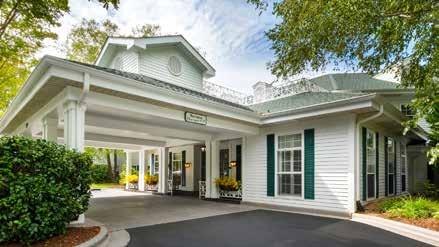

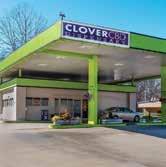
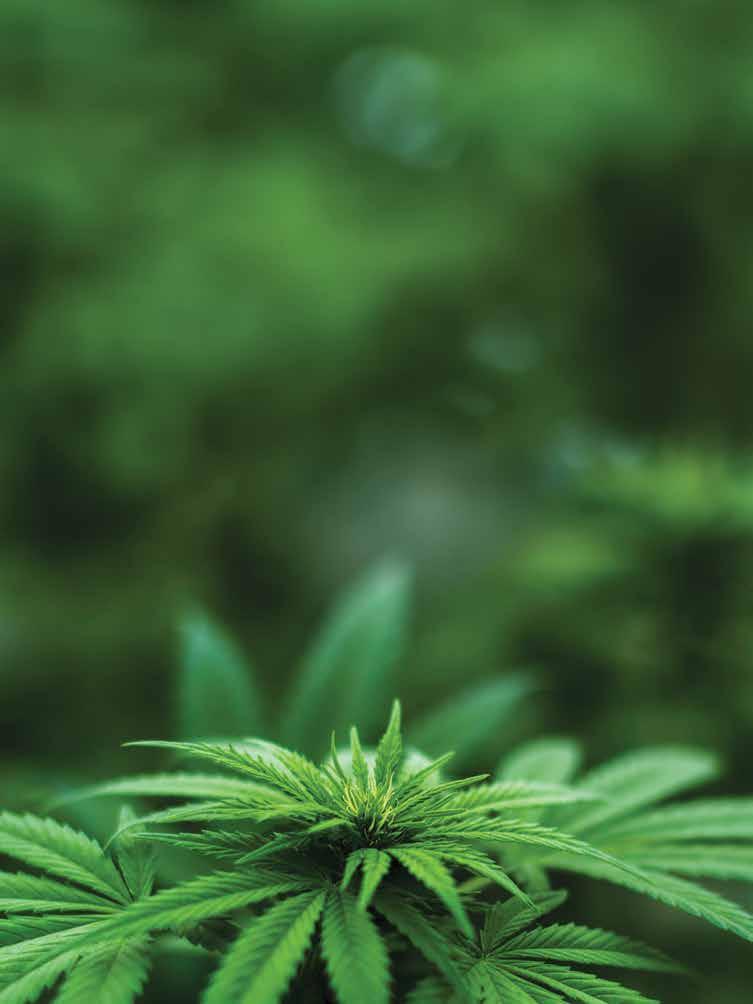

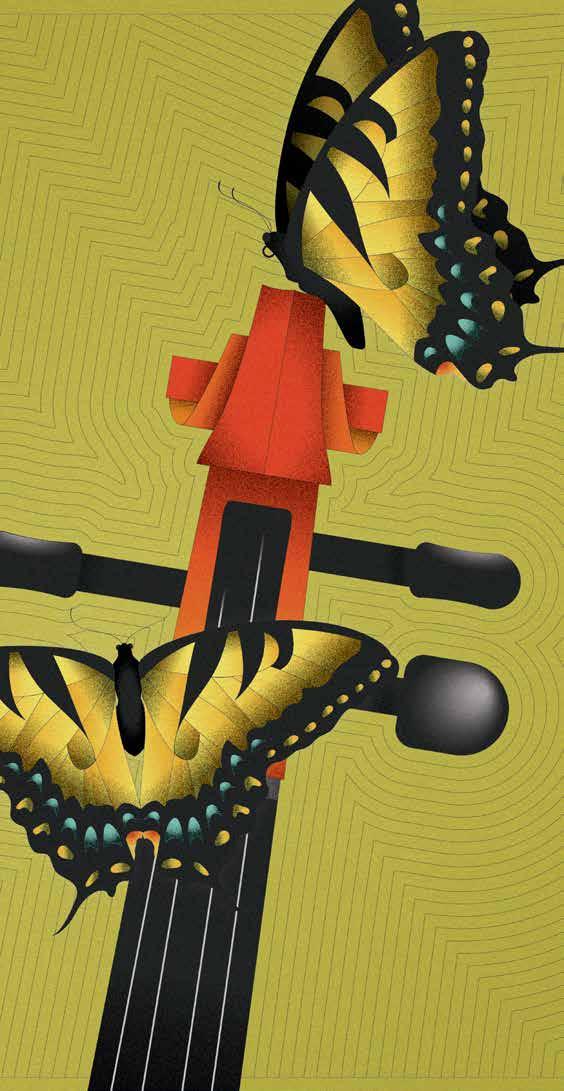
5
First Baptist Church of Asheville March 16, 2024 at 2:00 p.m. and 8:00 p.m.
Noah Bendix-Balgley and Shanshan Yao headline this all-violin, allconcerto program as a husband and wife duo. An iconic Chinese work for violin and orchestra, Butterfly Lovers kicks off the program with virtuosic and intertwining melodies. The delicate dance between the two violins continues with Bach’s Double Violin Concerto. Finally, Bendix-Balgley takes on the grand finale: Brahms’s one and only violin concerto, famed for its technically demanding passages and stunning lyricism.
Darko Butorac, Conductor
Noah Bendix-Balgley, Violin
Shanshan Yao, Violin
PREMIUM SEASON SPONSORS

Johann Sebastian Bach (1685 - 1750)
Johann Sebastian Bach composed the bulk of his instrumental secular music during his employment at the court of Prince Leopold of Anhalt-Cöthen from 1717 to 1723. Since the court was Calvinist, there was no call on Bach to compose church music. From that period came the Brandenburg Concertos, the first book of the Well-tempered Clavier, the Orchestral Suites and many of the works that appear to have been lost in their original versions but crop up later as concertos for one, two, three and four harpsichords.
Bach was an accomplished violinist. During his late teens he earned badly needed money as “lackey and violinist” to Duke Johann Ernst, the younger brother of the Duke of Weimar (whose employment Bach entered five years later). We know that during his years in Cöthen he composed at least four concertos for one violin and two for two violins. After his death, however, half his manuscripts went to his son Wilhelm Friedemann, who, perennially short of money, probably sold them for scrap paper, a valuable commodity at the time. The other half of the manuscripts, including those of the A minor and E major violin concertos and the D minor concerto for two violins, ended up in the hands of his more fastidious son, Carl Philipp Emanuel, who took good care of them. We do not know when and by whom the Concerto for Two Violins was first performed, but it probably was at the court of Cöthen with its modest orchestra.
In the Concerto, Bach seems to have delighted in the many ways he could make the two soloists interact in dialogue intertwining and playing tag with the melodies. In fact, all three movements are short on thematic material in order to emphasize the flexibility of the main themes, which are shared equally by the two violins. The Concerto is composed in the high Baroque style “invented” by Antonio Vivaldi. Bach was a great admirer of the Italian composer, adopting his style and even resetting his Concerto
for Four Violins as a concerto for four harpsichords.
The first and third movements have strong, driving ritornellos (thematic refrains), while the violin dialogue plays the intervening episodes. But the second movement belongs to the soloists alone, playing a gentle, serpentine melody in imitative counterpoint. It is among the most sensuous and emotive of all Bach’s concerto movements. The themes assiduously avoid tonic cadences in order to increase the harmonic tension. The movement includes a number of repeats, as if the young composer had been reluctant to release them.
Around 1739, while Kantor of the Thomaskirche in Leipzig, Bach transcribed this Concerto for two harpsichords, to be performed by the Bachisches Collegium, the weekly concert of secular vocal and instrumental music held in Zimmermann’s Coffee House, a high-class bourgeois establishment spacious enough to accommodate a large ensemble.
He Zhanhao* (b. 1935) Chen Gang* (b. 1933)
There are few collaborative works in the Western classical repertory. But then, given the date of composition of The Butterfly Lovers, during the first idealistic decade of the Cultural Revolution in China, such an effort is hardly surprising. While a student at the Shanghai Conservatory, He Zhanhao joined with several classmates to form a violin experimental group, attempting to adapt western classical principles and techniques to Chinese folk melodies. The Butterfly Lovers, written together with his fellow student Chen Gang in 1959, emerged as a product of the group's musical experiments.
Born in Shanghai and a graduate of the Shanghai Conservatory of Music, Chen Gang is currently a professor at his alma mater. He has composed in most Western musical genres, but has made extensive use of pentatonic scales. He has also composed a number of film scores.
(continued on next page)
J. S. Bach
Concerto for Two Violins in D minor, BWV 1043
Noah Bendix-Balgley, Violin
Shanshan Yao, Violin
I. Vivace
II. Largo; ma non tanto
III. Allegro
Music Sponsors
Beverly Briedis in memory of Chuck Briedis
George & Kathy Dambach
Jim & Mary Kirby
He Zhanhao & Chen Gang
The Butterfly Lovers’ Violin Concerto
Noah Bendix-Balgley, Violin
Shanshan Yao, Violin
I. Adagio Cantabile
II. Allegro
III. Adagio assai doloroso
IV. Pesante — Piu mosso — Duramente
V. Lagrimoso
VI. Preso resoluto
VII. Adagio cantabile
Music Sponsors
Debbie Green
Carol & Hugh McCollum
Sarah Van Gunten
INTERMISSION
Johannes Brahms Violin Concerto in D major, Op.77
Noah Bendix-Balgley, Violin
I. Allegro non troppo
II. Adagio
III. Allegro giocoso, ma non troppo vivace
Music Sponsors
Belinda & Jeffrey Fromson
CONCERT SPONSOR
David & Pamela Lane
GUEST ARTIST SPONSOR
SEASON MEDIA SPONSOR
SEASON RADIO SPONSOR
Media partner Blue Ridge Public Radio will air a recording of this performance, featuring conversations with ASO, on BPR Classic and bpr.org on Tuesday, April 16 at 7:00 p.m. and Thursday, April 18 at 9:00 a.m.
A native of Zhuji in Zhejiang province, He Zhanhao played in a traditional opera troupe, where he learned to imitate the erhu technique on the violin. (The erhu, sometimes known in the West as the “Chinese violin,” has two strings that are bowed. It is an instrument employed for solos, small ensembles and large orchestras). He graduated from the Shanghai Conservatory in 1964 and continued to teach in its composition department. His music covers a wide range of historical and traditional styles from both Chinese and Western sources, and he has continued to combine Western and Chinese instruments.
The single-movement programmatic
The Butterfly Lovers is based on a popular Chinese legend first recorded in the ninth century and often called the Chinese Romeo and Juliet story:
A young woman named Zhu Yingtai disguises herself as a man traveling to Hangzhou to study. During her journey, she meets Liang Shanbo, a schoolmate from the same province. They study together for three years, during which their relationship strengthens. When the two part, Zhu offers to arrange for Liang to marry her “fictitious” 16-year-old sister. When Liang travels to Zhu's home, he discovers her true gender. Although they are devoted and passionate about each other, Zhu’s parents have already arranged for her to marry someone else. Depressed, Liang dies in office as a county magistrate. On Zhu’s wedding day, whirlwinds prevent the wedding procession from escorting Zhu beyond Liang's tomb. When Zhu leaves the procession to pay her respects at the grave, it splits apart, and Zhu jumps into it to join him. A pair of butterflies emerges from the tomb and fly away.
Over the years, the story has given rise to a number of operas, films, animated films and a musical.
After a brief introduction on the oboe and flute, the solo violin enters with a “love” theme that pervades the entire Concerto. Although written in one continuous movement, the Concerto has three sections, corresponding to the typical Western concerto structure. The sections portray programmatically
the most important episodes of the story: the love between Zhu and Liang, the Whirlwind, and the lovers’ metamorphosis. The themes derive from Chinese opera and traditional folk melodies. The violin frequently recalls erhu techniques.
*In the Chinese manner, the family name comes first, the personal name second. It is proper to refer to them as Chen and He, but not as Gang and Zhanhao.
Johannes Brahms (1833 - 1897)
One of the marks of great artists is accurate self-assessment, the knowledge of their strengths and limitations. Like Mendelssohn and Tchaikovsky, Brahms sought the advice of a leading violinist when he was composing a concerto for the violin, an instrument with which he was not intimately familiar. Brahms’s long-time friend Joseph Joachim, a Hungarian violinist, composer and educator who for over half a century was the world’s dominant violin virtuoso, was intimately involved in the concerto’s composition. Needless to say, Brahms dedicated it to him. Joachim gave the premiere on New Year’s Day, 1879.
The initial reception of the Concerto was respectful but cool. Its technical demands deterred many violinists, who dubbed it “Concerto against the Violin and Orchestra.” It is, like the other Brahms concerti, a true partnership between soloist and orchestra; virtuosity for its own sake is totally absent. Joachim attempted to have Brahms make it easier for the soloist, but the manuscript of the violin part in the State Library in Berlin, full of Joachim’s suggestions, shows that, in this case at least, the violinist seldom prevailed.
The sunny mood of the concerto is close to that of the Symphony No. 2 in D major, written shortly before. The dreamy opening of the lyrical first movement is gradually infused with joyous energy and culminates, after the cadenza, in a headlong rush to the finish by soloist and orchestra. Joachim wrote a large cadenza for this movement, which is still a favorite with soloists and audiences, although many violinists have written their own.
Brahms’s original plan was for a concerto in four movements, including
a scherzo. But he discarded the scherzo and the original slow movement because their style did not mesh with the rest of the work. The slow movement we have today opens with the solo oboe playing one of the most delicate and beautiful melodies in the literature. The violin then embellishes this melody with arabesques (florid ornamentation of a theme), maintaining its special relationship with the oboe throughout. The middle of the movement becomes more intense and dramatic, but Brahms never loses sight of the theme.
The fiery rondo-finale exploits the melodies and rhythms played by Roma (Gypsy) musicians in the cafés of central Europe. It is one of the few places where Joachim’s intervention attenuated the difficulties for the violinist. He managed to get Brahms to moderate the movement’s tempo by adding “ma non troppo” (but not too much) to the tempo indication Vivace
Program notes by: Joseph & Elizabeth Kahn www.wordprosmusic.com
Noah Bendix-Balgley enjoys a wide-ranging musical life as a violinist. He is First Concertmaster of the Berliner Philharmoniker and tours both as a chamber musician and as a soloist. His clear and heartfelt personal sound has reached and moved listeners around the world.
As soloist, Noah appears frequently with leading international orchestras, as well as in recital at the world’s finest concert halls. Recent highlights include his concerto debut at Carnegie Hall as the featured soloist on the Berliner Philharmoniker USA tour under the direction of Kirill Petrenko, as well as concerto appearances with the Philharmonic Orchestras of Berlin, Dresden, Auckland, Nagoya, and Oklahoma City.
Noah is a renowned performer of traditional klezmer music, a musical style that has been part of his life since an early age. He has performed groups such as Brave Old World, and has taught at many klezmer workshops. In 2016, Noah composed and premiered his own klezmer violin concerto, Fidl-Fantazye, with the Pittsburgh Symphony Orchestra, where he was concertmaster from 2011 to 2015. Since the premiere, he has also performed the work with the Baltimore Symphony, the China Philharmonic, and the Buffalo Philharmonic. In November 2021, he premiered the chamber orchestra version of Fidl-Fantazye with the Kammerakademie Potsdam, a version he also presented with members of the Berliner Philharmoniker in a special ‘Late Night’ klezmer concert at the Philharmonie Berlin.
A passionate chamber musician, Noah performs in several ensembles: in a trio with pianist Robert Levin and cellist Peter Wiley, with the Rosamunde String Quartet that includes members of the Los Angeles and New York Philharmonics, and with the multi- genre septet Philharmonix, which features members of both the Berlin and Vienna Philharmonic Orchestras. Philharmonix tours worldwide, has an ongoing multiyear residency at Vienna’s Konzerthaus, and in 2022 released its third album on Deutsche Grammophon. In the 2023/24 season, he tours with Philharmonix around China, Korea, and Japan. Noah’s other recent chamber highlights include performances at the Seattle Music Festival, Bergen International Festival, Sarasota Music Festival, ChamberFest Cleveland, Zermatt Music Festival, Aix-en-Provence, and La Jolla Summerfest.
Born in Asheville, North Carolina, Noah began playing the violin at age 4. At age 9, he played for Lord Yehudi Menuhin. He graduated from the Indiana University Jacobs School of Music and the Munich Hochschule. His principal mentors were Mauricio Fuks, Christoph Poppen and Ana Chumachenco. A laureate of the 2009 Queen Elisabeth Competition, he also won top prizes at the Long-Thibaud Competition in France and the Postacchini Competition in Italy.
Now a gifted educator himself, Noah teaches at the Karajan Academy of the Berliner Philharmoniker. He has served on the juries of the Menuhin Competition, the Indianapolis International Violin Competition, and as chair of the violin jury at the the Carl Nielsen Competition. He has given masterclasses at his alma mater Indiana University, and at academies around the world including Morningside Music Bridge, Domaine Forget, the Australian National Academy of Music, the Shanghai Orchestra Academy, and the Peabody Institute.
Chinese violinist Shanshan Yao joined the New York Philharmonic in September 2013. Previously, she was a member of the first violin section of the Pittsburgh Symphony Orchestra for four years. She recently performed Mendelssohn’s Violin Concerto with the Pittsburgh Symphony Orchestra, led by music director Manfred Honeck, as well as with the Northeastern Pennsylvania Philharmonic. As a soloist Ms. Yao has also performed with the Calgary Philharmonic Orchestra, Calgary Civic Symphony, Banff Centre Chamber Orchestra, and Japan’s Sendai Philharmonic Orchestra. In February 2009 she received critical acclaim for her debut recital at Canada National Arts Centre in Ottawa. She was invited to appear in a special performance for former Secretary of State Colin Powell at the Eisenhower Fellowships conference in Philadelphia in 2006. Ms. Yao served on the faculty of Carnegie Mellon University’s Pre-College Music Program in the summer of 2013.
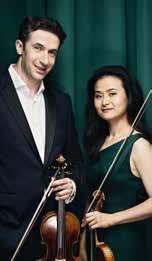
Ms. Yao’s numerous honors include first prizes in the Calgary Concerto Competition and Morningside Music Bridge Concerto Competition (Canada), second prizes in the Shean String Competition (Canada) and Hellam Young Artists Competition (U.S.), as well as prizes in the Corpus Christi International Competition for Piano and Strings (U.S.) and the Michael Hill International Violin Competition (New Zealand). As one of the winners of the CBC Radio’s Up and Coming series, a showcase of promising young talents, she shared the stage with pianist Jon Kimura Parker.
An active chamber musician, Ms. Yao has participated in the Aspen, Summit, and Sarasota music festivals; Music from Angel Fire; The Banff Centre; and Music@Menlo, where she served as a chamber music coach in 2009. Her piano trio won second prize in the National Music Festival in Canada in 2002. Ms. Yao has collaborated with such renowned artists as Ida Kavafian, Steve Tenenbom, Jeremy Denk, and Ransom Wilson.
A violinist since the age of six, Ms. Yao enrolled at Shanghai Conservatory of Music when she was nine. She made her orchestral debut at the age of 12 with the Shanghai Radio Symphony Orchestra, and continued her studies in Canada as a full-scholarship student in Mount Royal Conservatory’s Academy Program. Shanshan Yao received her bachelor of music degree from The Curtis Institute of Music and her master of music degree from The Juilliard School. Her teachers included Aaron Rosand, Donald Weilerstein, Ronald Copes, William van der Sloot, and Xiaoming Wu.






First Baptist Church of Asheville April 20, 2024 at 2:00 p.m. and 8:00 p.m.
From Vienna to old Hollywood, we bring operatic charm and glamour to the stage with a program featuring selections from Mahler and Mozart alongside Strauss’s ostentatious Der Rosenkavalier and a sparkling violin concerto by Korngold, an early Hollywood composer.
Darko Butorac, Conductor Blake Pouliot, Violin
PREMIUM SEASON SPONSORS

W. A. Mozart
Overture from Le nozze di Figaro, K.492
Music Sponsors
Debbie Green
Wolfgang Amadeus Mozart (1776 - 1791)
In the 1780s Opera was the most prestigious musical genre in Vienna, and Mozart had the luck to team up with one of the best librettists of all time, Lorenzo da Ponte (1749-1838). Born in Italy of Jewish parents and converted as a child to Catholicism, da Ponte wrote the librettos for three of Mozart’s greatest operas: Don Giovanni, Le nozze di Figaro (The Marriage of Figaro) and Cosi fan tutte. Unfortunately, the da Ponte operas met initially with only limited success in Vienna. It was only after Mozart’s death that their true value was appreciated.
The Marriage of Figaro is one of the oldest operas in the standard repertoire and one of the most youthful in spirit. When Pierre de Beaumarchais’s play, on which the opera is based, was published in 1782, it’s unflattering portrait of the aristocracy understandably caused an uproar and horrified Louis XVI. Like any scandal, it proved irresistible and must have spread rapidly, because Mozart’s opera to da Ponte’s libretto was premiered only four years later on the cusp of the French Revolution. Nor did sit well with Hapsburg Emperor, Joseph II, brother of Marie Antoinette.
As is customary for most opera overtures of the eighteenth century, this one contains no music from the opera itself. Nevertheless, the overture captures the spirit of the opera in its opening bars, a sequence of rapid notes on the strings scurrying like whispering conspirators. It is answered by the whole orchestra with festive trumpets, and these alternating moods continue throughout the ebullient overture.
Erich Wolfgang Korngold (1897 - 1957)
Erich Wolfgang Korngold is a representative of the last gasp of late romanticism in Vienna. He never veered from this established idiom and never ventured into modernistic experiments.
He was a true child prodigy whose works were performed in public in Vienna by the time he was 11 (although the fact that his father was the music critic of Vienna's most prestigious newspaper, Neue Freie Presse, may have helped).
In the early part of the century Korngold was known mainly through his operas (Violanta, Die tote Stadt, Das Wunder der Heliane) but today he is primarily remembered by his pioneering film music. At the urging of the director Max Reinhardt, with whom he had staged Die Fledermaus in Berlin in the 1920s, he came to Hollywood in 1934 where he wholeheartedly embraced the new medium and, incidentally, saved his life.
By the time Korngold came to Hollywood, his “classical” compositions were regarded as superficial and irrelevant to the proponents of mainstream twentiethcentury modernism. But Hollywood adored him. Korngold saw film as the true successor to the operatic stage. His success as film music composer was phenomenal, two of them, Anthony Adverse (1936) and Robin Hood (1938), won Oscars.
The film music scene in Hollywood of the 1930s and 40s was dominated by German and Austrian émigrés who had escaped Nazism. It is not surprising, therefore, that when Korngold once again took up his classical pen in 1945 to write his Violin Concerto he dedicated it to an old family friend, the doyenne of the émigrés, Franz Werfel's wife and Gustav Mahler's widow, the legendary Alma Mahler. No less a master than Jascha Heifetz premiered the concerto in St. Louis.
It is an amusing exercise, when listening to the Concerto, to note how many themes and passages immediately call to mind the musical conventions we have come to associate with certain kinds of film action. We make these associations on the basis of countless hours of movie going, during which the musical “language” has implanted itself in the subconscious and controlled our emotional response. In the Concerto Korngold reworked music
(continued on next page)
Anne Jarema & Clifford Albertson
Gary & BA Schenk
Erich Wolfgang Korngold Violin Concerto in D major, Op.35
Blake Pouliot, Violin
I. Moderato nobile
II. Andante III. Rondo
Music Sponsors
Mary Ellen Dendy & Aaron Dahlstrom
Gustav Mahler
Adagietto from Symphony No. 5
Music Sponsors
Richard Schaffer & Anastasia Bartlett
Robin & Gordon Gaiser
Adarrell Gadsden & Marcie Ownbey
Richard Strauss Der Rosenkavalier Suite, Op.59
CONCERT SPONSOR

GUEST ARTIST SPONSOR

SEASON MEDIA SPONSOR
SEASON RADIO SPONSOR INTERMISSION
Media partner Blue Ridge Public Radio will air a recording of this performance, featuring conversations with ASO, on BPR Classic and bpr.org on Tuesday, May 14 at 7:00 p.m. and Thursday, May 16 at 9:00 a.m.
from his successful film scores, including Juarez (1939), Anthony Adverse (1936), Another Dawn (1937) and The Prince and the Pauper (1937).
But the Concerto is not all “movie music.” Korngold transforms the themes to conform to the traditional conventions of the concertos of composers from Mendelssohn to Max Bruch. The technical and expressive demands, as well as the harmonies, surpass melodic clichés. Although it reflects the composer’s nostalgic attachment to fin-de-siécle Viennese Romanticism, even the most discerning twenty-first-century ears are eclectic and accepting, no longer trapped in the clutches of atonal dogma. Most important of all, Korngold’s writing for the violin is everything a soloist could dream of.
The first movement main theme, from Another Dawn, is a multifaceted melody and an ancestor of the Star Trek theme. The more sentimental, second theme is from Juaréz. The development inhabits the violin’s stratosphere.
The second movement is a rhapsodic romantic reverie on a theme from Anthony Adverse. As opposed to the sprawling melodies from the first movement, this one is surprisingly simple. Heating up the passion, Korngold uses a more expansive melody for the middle section.
In the energetic, humorous finale, Korngold teases the listener by delaying an outright statement of the movement’s single theme, from The Prince and the Pauper. Instead, the soloist starts with a fanciful melody containing hints of the theme for a couple of minutes, until the soloist finally “pins it down.”
Gustav Mahler (1860 - 1911)
Mahler completed his Symphony No. 5 in the summer of 1902, the final work in a burst of creativity that included the Rückert Songs. It was the first composition following his marriage to the scintillating 22-year-old Alma Schindler, the stepdaughter of a famous Austrian landscape painter and a talented pianist and composer in her own right. Gustav and Alma had met in Paris in November 1901 and were married four months
later (she was pregnant). This marriage – which lasted for 10 stormy years until the composer’s death – was the subject of endless gossip. It was definitely considered a social advancement for Mahler, a Jew (although converted to Catholicism) from a small town in Bohemia, the backwater of the AustroHungarian Empire. It gave him the longsought introduction to the intellectual elite of Vienna.
Alma wrote out much of the orchestration of the Symphony at Gustav’s direction, and he considered it “their” music. Out of the emotional maelstrom of the first three movements, which use a gigantic orchestra, emerges one of Mahler’s most gentle and sublime utterances, the Adagietto, marked espressivo, seelenvoll (“soulful”), and mit innigster Empfindung (“with the most heartfelt sentiment”). Scored for strings and harp alone, it forms an instrumental and emotional counterpoint to the loud brassiness of the preceding and following movements, supplying the comfort that has heretofore been lacking. The expansive melody, which Mahler spins out in free variations, is considered a love song to Alma, expressing the composer’s intense feelings for his new wife. Both Mahler and Alma had personal manuscripts of this movement.
Richard Strauss (1864 - 1949)
Despite the disdain with which most opera plots are regarded, occasionally an opera composer and librettist form a winning partnership where each member of the team complements the skills of the other to create a masterpiece of musical and dramatic integrity. Mozart and Lorenzo da Ponte come immediately to mind, as do Giuseppe Verdi and Arrigo Boito. In the last century, composer Richard Strauss and playwright Hugo von Hofmannsthal found a kinship and mutual understanding that produced a series of successful operas starting in 1908 with Elektra
Following the success of that grim and bloody piece, Strauss was searching for a Figaro-style comedy. In response, von Hofmannsthal came up with a totally new type of libretto, an amalgam of various French eighteenth-century farces. In a note to the compose he
wrote: “I have...worked out a complete and entirely new scenario for a grand opera with downright comic figures and situations, and action as colorful and almost as obvious as a pantomime.”
The result was the immensely successful Der Rosenkavalier, premiered in 1911. Set in the eighteenth-century Vienna of Empress Maria Theresa, the extravagantly complicated plot involves the youth Octavian, who has been sexually initiated by the Marschallin, the neglected young wife of an elderly field marshal. When her bumbling old cousin Baron Ochs barges in on the couple to announce to her his intention to rectify his finances by marrying Sophie, daughter of a successful merchant with pretensions, Octavian – nearly caught in flagrante delicto – is forced to dress as a chambermaid to hide his identity. As he flirts with the disguised Octavian, Ochs states his intention to woo Sophie by presenting her with a silver rose from the hand of an aristocratic emissary. After more comic business, the Marschallin entrusts Octavian with Ochs’s silver rose and its mission. At a grand ball, Octavian presents the rose to Sophie, at which point both, of course, succumb to love at first sight. Then it’s more classic comic intrigue to extricate the young heroine from her elderly fiancé. Finally, Ochs is outwitted and the Marschallin, a gracious dea ex machina, relinquishes Octavian to Sophie.
Strauss laced Der Rosenkavalier with waltz tunes at the request of his librettist – in spite of the fact that at the time of the action the waltz didn’t even exist in aristocratic ballrooms. Strauss himself extracted from the opera two Walzerfolgen (waltz sequences). The Rosenkavalier Suite, Op. 59 which appeared in 1945, was probably not assembled by Strauss, but by conductor Artur Rodzinski, then conductor of the New York Philharmonic.
Program notes by: Joseph & Elizabeth Kahn www.wordprosmusic.com
With a vivid onstage presence, dazzling technique, and keen Winner of the Grand Prize at the 2016 Orchestre Symphonique de Montréal Manulife Competition, Blake Pouliot’s 2023/24 symphonic highlights include Shostakovich 1, Bruch 1, Tchaikovsky, Korngold and Sibelius concerti across the US and Canada with Orchestre Symphonique de Montréal with Roderick Cox, Artis-Naples and NAC Ottawa with Alexander Shelley, Quebec City Symphony and Clemens Schuldt amongst others.
In Europe this season, Pouliot makes his Spanish debut with the Philharmonic Orchestra of Spain at the Teatro Monumental in Madrid, performing the Tchaikovsky concerto with Rossen Milanov alongside which Pouliot will also play-direct Piazzolla’s The Four Seasons in a separate chamber program.
During his time as Soloist-in-Residence of Orchestre Métropolitain in 2020/21, Pouliot and Yannick Nézet-Séguin performed Mozart’s Violin Concerto No. 5 and Piazzolla’s The Four Seasons which led to Pouliot’s 2022 debut with the Philadelphia Orchestra at the Kimmel Centre, performing John Corigliano’s The Red Violin (Chaconne for Violin and Orchestra) with Nézet-Séguin.
As a chamber musician and recitalist, Pouliot returns this season to NAC Chamber Festival, San Francisco, Aspen Music Festival, La Jolla Summerfest where he performed the festivalopening concert last year with conductor Alan Gilbert, and the National Youth Orchestra of Canada for his third consecutive year as Artist-in Residence.
Since his orchestral debut at age 11, Pouliot has performed with the orchestras of Aspen, Atlanta, Detroit, Dallas, Madison, Montreal, Toronto, San Francisco, and Seattle, among many. Internationally, he has performed as soloist with the Sofia Philharmonic in Bulgaria, Orchestras of the Americas on its South American tour, and was the featured soloist for the first ever joint tour of the European Union Youth Orchestra and National Youth Orchestra of Canada.

Blake Pouliot performs on the 1729 Guarneri del Gesù on generous loan from an anonymous donor.








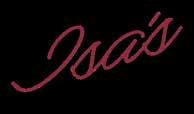
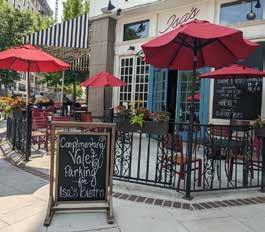



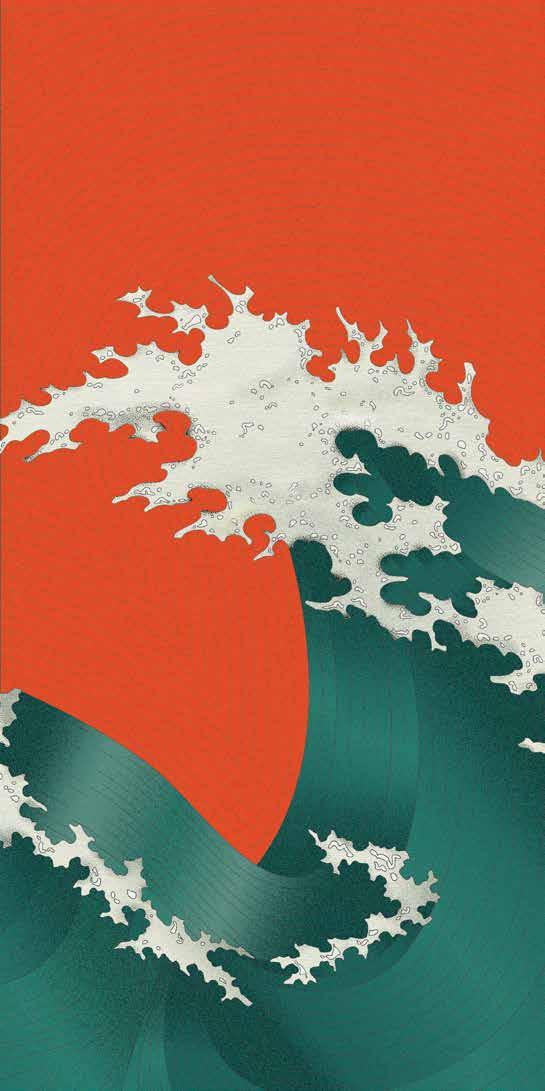
MASTERWORKS 7
Whittington-Pfohl Auditorium at Brevard Music Center May 18, 2024 at 2:00 p.m.
Our season finale takes a dramatic turn and features two powerful titans of Western repertoire, both firsts for their composers. Once deemed worthless and unplayable by his mentor, Tchaikovsky’s first piano concerto quickly leapt to international fame and secured its place as one of the most bombastic and popular piano concertos ever composed. A fitting companion indeed for Mahler’s mighty “Titan.” Mahler evokes the “voice of nature” with his first symphony, capturing nature’s beauty with “leisurely” melodies and its fury with “stürmisch bewegt” (stormy motion) for a powerful and emotional end to our season.
PREMIUM SEASON SPONSORS

Pyotr Ilyich Tchaikovsky (1840 - 1893)
It is ironic that Tchaikovsky’s two most popular works, the First Piano Concerto and the Violin Concerto, were initially rejected by the greatest virtuosi of his country as unplayable fiascos.
“...Utterly worthless, absolutely unplayable. Certain passages are so commonplace and awkward they could not be improved, and the piece as a whole was bad, trivial, vulgar.” This was the verdict of Nikolay Rubinstein, first director of the Moscow Conservatory and one of Tchaikovsky’s mentors, on hearing the composer play his new Piano Concerto on Christmas Eve 1874. The tirade raised Tchaikovsky’s hackles, and he refused to change a single note (although in later editions he made some minor modifications). But with Rubinstein’s negative opinion, he had little chance of mounting a respectable performance – or unbiased reception –in Russia. What has come to the most popular piano concerto by Russia’s most popular composer was premiered in Boston on October 25 1875, with a pickup orchestra and famed pianist Hans von Bülow. It was a smashing success.
It is worth remembering that the First Piano Concerto came relatively early in Tchaikovsky's career. Rubenstein had served both as a mentor and first employer to the young composer. Moreover, Tchaikovsky's well-known bouts of depression and sense of alienation because of his homosexuality exacerbated his self-doubts about the quality of his music. It was a personal triumph, therefore, that he managed to withstand Rubinstein's vicious assault.
Although the majestic introduction has become so well known as to be recognizable even to people unfamiliar with classical music, it was revolutionary for its time. It remains unlike any standard introduction in the orchestral repertory, replete with a fully developed theme and a cadenza.
Introduced by a soft chordal transition, the exposition begins with a melody Tchaikovsky allegedly heard a blind beggar sing at a country fair, but this theme too is hardly touched on again. The two following themes, one for the winds, the other for the strings, become more important for the movement as a whole. The long cadenza is unusually restrained, a fine vehicle for highlighting the pianist’s control of pianissimo.
The second movement opens with a gentle theme on the flute, accompanied by muted strings; the theme is then taken up by the piano with just a single note change. Instead of maintaining the tempo for the middle section of the slow movement, Tchaikovsky quixotically launches into a cadenza of pianistic pyrotechnics as a lead-in to a melody based on a popular cabaret song of the time.
In the rondo finale Tchaikovsky again uses a folk tune in triple meter, but with the accent always on the second beat. As momentum towards the climax builds, the violins sneak in a hint of the main theme of the first movement. In place of a formal solo cadenza, an excited coda with lavish pianistic flourishes concludes the Concerto.
It is probably fair to ask why this Concerto is such a popular competition piece. In keeping with the composer’s tumultuous emotional life, it requires of the performer a mastery of just about every artistic and technical resource: rapid passages in octaves, abrupt changes in mood, delicate passages of arpeggiated filigree, giant buildups of harmonic and emotional tension, whispered legato pianissimos. Is it any wonder Rubinstein overreacted?
Gustav Mahler (1860 - 1911)
In the late 1880s Gustav Mahler was building a reputation as a symphonic and operatic conductor. As he moved from one conducting post to another, usually as the assistant conductor in opera houses, he had only limited time for composing. It took him from 1883 to 1888 to finish the First Symphony for its premiere and another 11 years to have it ready for publication.
Pyotr Ilyich Tchaikovsky
Piano Concerto No. 1 in B-flat minor, Op.23
Olga Kern, Piano
I. Allegro non troppo e molto maestoso
II. Andantino semplice
III. Allegro con fuoco
Music Sponsors
Gustav Mahler
Symphony No. 1 in D major, "Titan"
I. Langsam, schleppend
II. Kräftig bewegt
III. Feierlich und gemessen
IV. Stürmisch bewegt
Music Sponsors
CO-CONCERT SPONSORS
GUEST ARTIST SPONSOR
SEASON MEDIA SPONSOR
SEASON RADIO SPONSOR INTERMISSION
During the interval, Mahler made major changes. At its premiere in Budapest in 1889, Mahler had called it a “Symphonic Poem in two parts” with an elaborate literary program that he later repudiated. The origin of the Symphony’s subtitle “Titan” is uncertain; some scholars believe it derived from the title of a novel by Jean Paul, a popular literary figure during the heyday of the Romantic period. In its first version, the symphony had five movements, but Mahler immediately discarded the original second movement. He also expanded
(continued on next page)
the size of the orchestra and revised the orchestration drastically. The discarded second movement, an Andante titled “Blumine,” resurfaced only in 1967 and is now occasionally performed with the symphony.
At the time he began the symphony, Mahler was also composing a cycle of four songs with orchestra, titled Lieder eines fahrenden Gesellen (Songs of a Wayfarer). The themes from two of these songs found their way into the symphony: The second song became the main theme of the first movement, while the fourth song became the middle section of the third movement.
In light of Mahler’s later symphonies, the First is relatively tame. Nevertheless, it was received with hostility and ridicule at the first performance, bewildering the audience and annoying the critics. Its originality lies in the innovative orchestration and harmonies, as well as in the intensity of the emotions it conveys. In 1941 before the resurgence of Mahler’s popularity, Aaron Copland perceived the value of the Mahler’s music: “Of all romantics, this archromantic has most to give to the music of the future,”
The first movement begins with an eerie introduction, the first two notes of which later morph into a birdcall, as well as the first two notes of the main theme. It is punctuated by a distant fanfare and a wailing oboe cry. The Allegro section begins in the cellos with the second Wayfarer song, “Ging heut morgen Übers Feld,” (I Walked this Morning over the
Field); the theme is the heart and soul of the symphony serving not only as the main theme of this movement, but also as the basis of the themes of the second and final movements. The music of the introduction recurs in the middle of the movement. Mahler's genius was his ability to keep all his thematic balls in the air, a feat brilliantly achieved in the coda.
The second movement Scherzo has the rhythm of the Ländler, an Austrian folk dance. Although it conforms to the classic minuet and trio form, Mahler spins out the first section far beyond the standard repeat structure. Both the opening three notes of the Scherzo and the Trio recall the birdcall theme from the first movement.
A macabre timpani ostinato accompanies a lonely double bass introducing the main theme of the third movement, a funeral march based on none other than the nursery rhyme “Frère Jacques” in the minor mode. The spooky parody is said to have been inspired by a popular picture by the French painter Jacques Callot of a dead hunter accompanied to his grave by forest animals. The middle section of the movement is based on the melody from the fourth Wayfarer song, “Die zwei blauen Augen von meinem Schatz,” (My Sweetheart’s Two Blue Eyes) hypnotic and calming. In a third episode, Mahler transforms the theme into a dance with more than a hint of Jewish Klezmer music, an aspect of Mahler’s heritage about which he manifested considerable ambivalence. Although a convert to Catholicism, he suffered constant anti-Semitic slights,
and after World War II, Leonard Bernstein had to bully the Vienna Philharmonic to revive Mahler’s music.
The movement leads directly to the stormy Finale, which in the original program notes was titled Dall’ Inferno al Paradiso (from hell to heaven). It opens with one of the most threatening passages in classical music and is subsequently taken up in the main body of the Allegro. In the Finale, Mahler ties together the themes from the earlier movements, even those from the discarded “Blumine” movement as a gentle, even comforting, second theme. The resolution occurs in a coda of heroic proportions, including a triumphant, full-voiced reprise of the distant fanfare from the opening of the Symphony.
Program notes by: Joseph & Elizabeth Kahn www.wordprosmusic.com

With a vivid onstage presence, dazzling technique, and keen musicianship, pianist Olga Kern is widely recognized as one of the great artists of her generation, captivating audiences and critics alike. She was born into a family of musicians and began studying piano at the age of five. At seventeen, she was awarded first prize at the Rachmaninoff International Piano Competition, and in 2001, she launched her U.S. career, winning a historic Gold Medal at the Van Cliburn International Piano Competition—the only woman in the last 50 years to do so.
A Steinway Artist, Olga is a laureate of several international competitions. In 2016 she was Jury Chairman of both Cliburn International Amateur Piano Competition and the first Olga Kern International Piano Competition, where she also holds the title of Artistic Director. In December 2021, Olga was Jury Chairman of the 1st Chopin Animato International Piano competition in Paris, France. In coming seasons, she will continue to serve on the juries of several high-level competitions. Olga frequently gives masterclasses and since 2017 has served on the piano faculty of the Manhattan School of Music. Also in 2017, Olga received the Ellis Island Medal of Honor (New York City). In 2019, she was appointed the Connie & Marc Jacobson Director of Chamber Music at the Virginia Arts Festival.
Olga has performed with many prominent orchestras, including the St. Louis Symphony, Pacific Symphony, Baltimore Symphony, Detroit Symphony, and the National Symphony Orchestra (Washington, D.C.), as well as Czech Philharmonic, Orchestra Filarmonica della Scala, Pittsburgh Symphony, São Paulo Symphony Orchestra, Iceland Symphony, Nordwestdeutsche Philharmonie, Tokyo’s NHK Symphony Orchestra, and Cape Town Philharmonic Orchestra. She was also a featured soloist on U.S. tours with the Royal Philharmonic Orchestra and the Royal Scottish National Orchestra in 2018 and 2022, and during the 2017–
2018 season, she served as Artist in Residence at the San Antonio Symphony. Highlights of the 2021–2022 season included performances with the Austin Symphony, Palm Beach Symphony, Milwaukee Symphony, Santa Rosa Symphony, Greensboro Symphony, Madison Symphony, New Mexico Philharmonic, Concerto Budapest Symphony Orchestra, and Academia Teatro alla Scala. She appeared as a soloist on a U.S. tour with the National Symphony Orchestra of Ukraine and performed recitals in Savannah, Sunriver, Huntsville, Fort Worth, Carmel, and Minneapolis as well as in Portugal, Poland, and Sweden. In the 2022–2023 season, she appeared with the Dallas Symphony, Minnesota Orchestra, Baltimore Symphony, Orquesta Filarmónica de Gran Canaria, Ireland’s National Symphony Orchestra, and Colorado Symphony. She performed recitals at the Minnesota Beethoven Festival and the International Piano Festival of Oeiras as well as in Brno and Mariánské Lázně, Czech Republic; Virginia Beach; Chicago; and San Francisco. In the 2023–2024 season, she performs Rachmaninoff’s four piano concertos and Rhapsody on a Theme of Paganini with the Austin Symphony and with the Virginia Symphony Orchestra, appears with the Czech Philharmonic on a nationwide telecast, and tours South Africa and Asia.
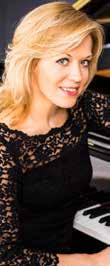
In 2012, Olga established the Kern Foundation “Aspiration,” which supports talented musicians around the world.
She is featured in award-winning documentaries about the 2001 Cliburn Competition: The Cliburn: Playing on the Edge, They Came to Play, and Olga’s Journey
Become an Asheville Symphony subscriber next season for the best seats and exclusive benefits all season long!
When you purchase a Masterworks Series subscription, you can get up to 10% off the subscription, early access to the best seats in the house, no hassle ticket exchanges, and more.
Visit AshevilleSymphony.org/Subscriptions for details!

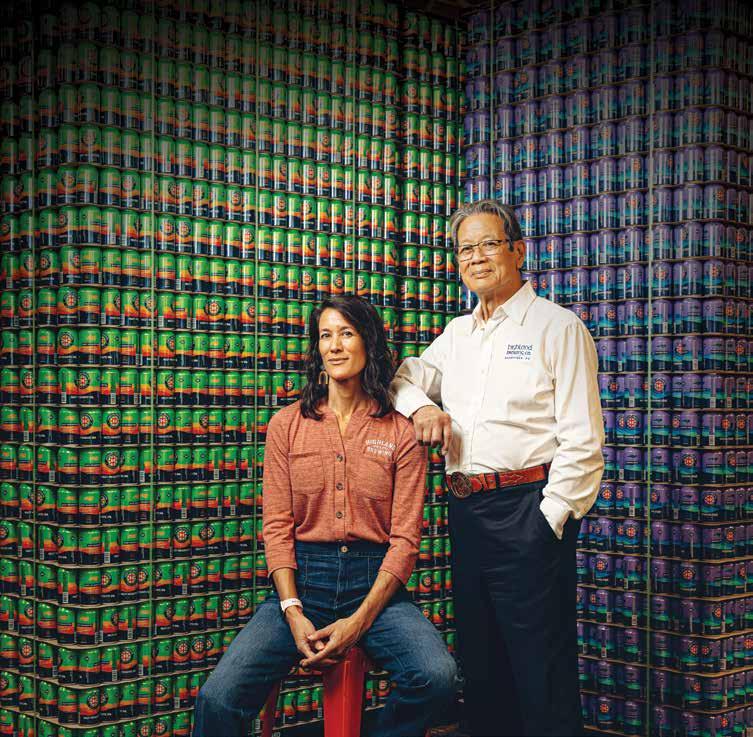

















Known for his genre-bending projects with operatic and Broadway productions in addition to the world’s great symphony orchestras, artist and Asheville resident Adam Larsen brings video projection design to ALT ASO for a uniquely immersive performance at Devil’s Foot Beverage Co.’s taproom. Paired with an innovative symphonic program, this performance will be unlike any other, uniting visual art and orchestral sounds for a truly unique experience. On sale March 26, 2024.
TUESDAY, MAY 21, 2024, 7:00 P.M.
SERIES PRESENTING SPONSOR

OFFICIAL AUTOMOTIVE COMPANY OF THE ASHEVILLE SYMPHONY
AMBER SPONSORS

BOHEMIAN SPONSORS
David & Dianne Worley

Planning for tomorrow doesn’t only mean the distant future. It means, well, tomorrow. Sixty seconds from now is just as important as sixty years from now, and we’ll help you make the most of all of it. With a personalized financial plan based on your life and priorities, tailored to help you do all the things you love, planning looks less like planning and more like living. Spend your life living.®

Marlowe Pasarilla Wealth Management Group jennifermarlowe.nm.com
© 2023. Northwestern Mutual is the marketing name for The Northwestern Mutual Life Insurance Company (NM) (life and disability Insurance, annuities, and life insurance with long-term care benefits) and its subsidiaries. Subsidiaries include: Northwestern Mutual Investment Services, LLC (NMIS) (investment brokerage services), a registered investment adviser, broker-dealer, and member of FINRA and SIPC. Northwestern Mutual Wealth Management Company® (NMWMC) (investment advisory and trust services), a federal savings bank. Not all Northwestern Mutual representatives are advisors. Only those representatives with “advisor” in their title or who otherwise disclose their status as an advisor of NMWMC are credentialed as NMWMC representatives to provide investment advisory services. NM and its subsidiaries are in Milwaukee, WI. Members of Marlowe Pasarilla Wealth Management Group use Marlowe Pasarilla Wealth Management Group as a marketing name for doing business as representatives of NM. Marlowe Pasarilla Wealth Management Group is not a registered investment adviser, broker-dealer, insurance agency or federal savings bank. To view detailed disclosures regarding individual representatives, view their information at http://jennifermarlowe.nm.com. jennifermarlowe.nm.com.
Bringing world-class chamber music to WNC for over 70 years


Wind ENSEMBLE + PIANo
Sunday February 11 4 p.m. Poulenc, Molbe, Francaix, Mozart
Friday March 15
7:30 p.m. Hensel, Janáček, Schubert Canellakis-Brown Duo


Friday May 10
7:30 p.m. Schumann, Debussy, Saint-Saëns, Paganini


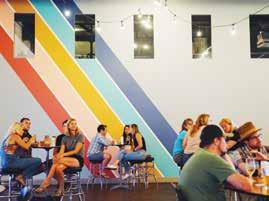


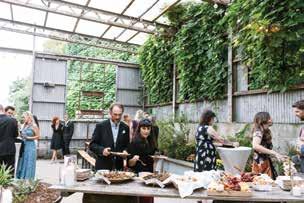

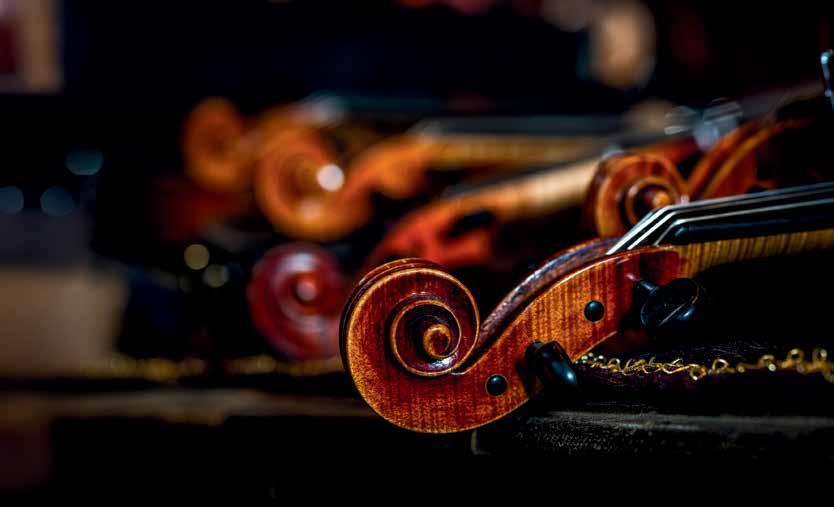
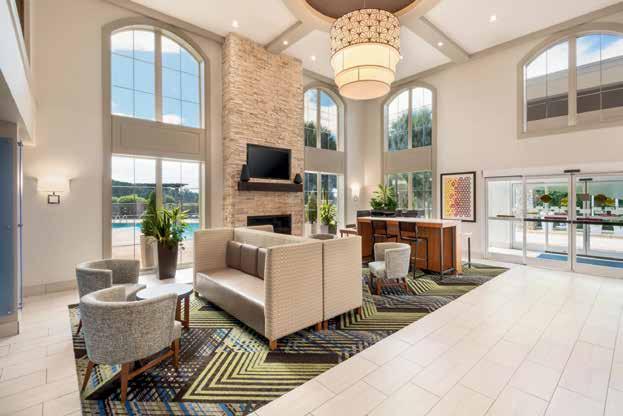

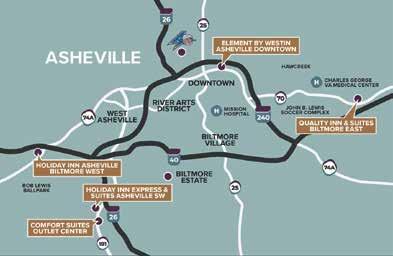









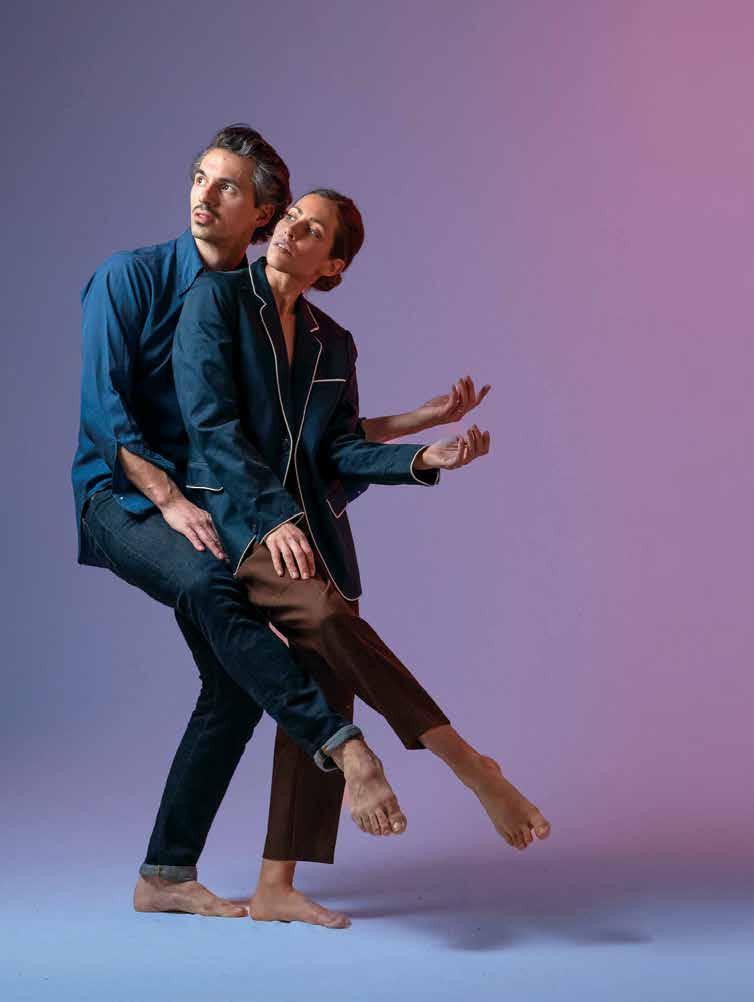
MARK AND MAGGIE O’CONNOR March 8 at 8 p.m.
CATHY LADMAN March 16 at 8 p.m.
PILOBOLUS re:CREATION March 22 & 23 at 8 p.m.
360 ALLSTARS March 27 at 7 p.m.
DERVISH March 29 at 8 p.m.
IVY ROWE from the Lee Smith Novel Fair and Tender Ladies April 11 & 12 at 7 p.m.
LIZZY & THE TRIGGERMEN April 13 at 8 p.m.
STEP AFRIKA! April 19 & 20 at 7 p.m.
ROBERT DUBAC’S STAND-UP JESUS May 3 & 4 at 8 p.m.
ROBERT DUBAC’S BRUNCH WITH JESUS May 4 & 5 at 11 a.m.
STEWART/OWEN DANCE
May 9–11 at 8 p.m. May 11 & 12 at 2 p.m. May 16–18 at 8 p.m. May 18 & 19 at 2 p.m.
ALEX CUBA May 24 at 8 p.m.
Many of Asheville’s greatest local businesses are those that serve the best food and drinks. Your Asheville Symphony is proud to partner with some of Asheville’s best restaurants, breweries, bars, and more. They serve Symphony patrons all year long; now they are doing more by supporting the Symphony as advertisers and sponsors.
Visit our Food & Beverage Partners to support your Symphony, and send these partners our love when you visit their establishments!
Do you work at or own a local restaurant or bar and want to be on this list? Contact the ASO's Development Department by phone (828.254.7046) or email (development@ ashevillesymphony.org).




















Call to schedule a visit and discover a holistic approach to a joy-filled retirement at Deerfield.



$25,000+
Henry A. LaBrun
David & Pamela Lane
Drs. Joanne & Tom Parker
Thomas C. Bolton
Diane & Rich Byers
Donald Gavin & Jayne Schnaars
Richard Schaffer & Anastasia Bartlett in Memory of Katherine Armitage & Jack Jones
Bill & Nancy Gettys
Keith Keener
Michael & Catty Andry
Timothy Butts & Susan Harrington Butts
Gary & Patty Coleman
Robert & Mercedes Eichholz Foundation
Dr. Bolling Farmer
Dr. John Hazlehurst
Dr. & Mrs. Ralph C. Loomis
Yvonne Smith
Ed & Cindy Towson
David & Dianne Worley
Olivia & Gary Zahler
Diana Bilbrey
Beverly Briedis
Craig Allen & Julie Cowden
Jerry & Diane Cunningham
George & Kathy Dambach
Paul & Liz Hosier
Mountaine Mort Jonas
Jim & Mary Kirby
Ann & Jerry McLellan
Katie & Phil Osborne
$5,000+
$3,000+

MEDIA SPONSORS
Families and businesses provide vital support through a variety of dynamic sponsorships that fund our artistic, community engagement, and educational programs. Sponsorship of Asheville Symphony programming offers unparalleled promotional and hospitality opportunities among sophisticated audiences at our innovative performances.
The Asheville Symphony has a track record of helping companies accomplish key business objectives through exclusive benefits such as:
• Category exclusivity (per concert or program)
• Entertaining opportunities
• Targeted access to key demographics
• Logo inclusion in broad marketing campaign and prominent onsite presence
• Brand transfer; establish lasting affiliation with one of Asheville’s most prestigious cultural institutions
We are more than happy to work with each sponsor to develop a customized, targeted sponsorship package with your business objectives in mind. Call 828.254.7046 or email development@ashevillesymphony.org to learn more about sponsorship opportunities.
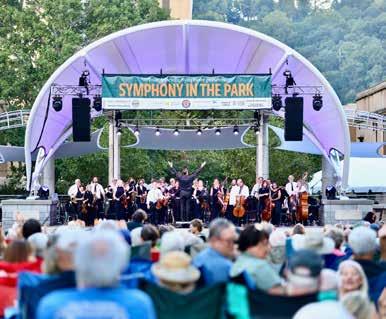
When you sponsor or donate to the Symphony, you support our artistic, community engagement, and educational programs. To learn more please call 828.254.7046 or email development@ashevillesymphony.org.
To make a donation to the Annual Fund, visit AshevilleSymphony.org/donate
We believe music matters. We believe it changes lives.
Here’s how we make music with your dollars:
$50
Covers the music for one Asheville Symphony Youth Orchestra Honors Strings Ensemble performance
$170
Covers the cost of orchestra folders for ten Asheville Symphony Youth Orchestra students
$375
Pays for one Music in the Schools program (one quintet, one school, one hour)
$750
Allows us to offer one masterclass for emerging young musicians with an esteemed guest soloist
$1,000
Provides tuition scholarships for two Asheville Symphony Youth Orchestra students
$1,300
Covers the purchase of music for a single Beethoven symphony
$3,000
Covers the cost of renting and moving a concert grand Steinway piano into our venue for piano recitals
$5,000
Allows for one workshop for the Asheville Symphony Youth Orchestra
$10,000
Pays the fees and travel for one guest soloist
$20,000
Covers the cost of ASO's Music in the Schools program, benefiting every 2nd - 4th grader in Asheville City and Buncombe County Schools

Contributions to the Asheville Symphony support our artistic and educational programming — everything from the music performed on stage by our highly trained and talented musicians to the education programs our musicians implement when visiting local elementary schools.
You can choose how to direct your support:
• Annual Fund
• Sponsorship
• Asheville Symphony's Artist Residency: A Celebration of the Violin
• Asheville Symphony Youth Orchestra
• Music Education Initiatives
• Endowment
The following recognition encompasses contributions made from January 1, 2023 through January 8, 2024.
January 1, 2023 - January 8, 2024 ASO SUPPORTERS
$50,000+
Asheville Symphony Guild
Flow Volkswagen Porsche Audi of Asheville
iHeart Media
Kimpton Hotel Arras
Ingeborg Meeke*
Noretta L. Taylor*
The William R. Kenan Jr. Charitable Trust
$25,000 - $49,999
Blue Spiral 1
Explore Asheville
Jane Christiansen*
Henry A. LaBrun
David and Pamela Lane
North Carolina Arts Council
Drs. Joanne and Tom Parker
Maurice and Bonnie Stone
$10,000 - $24,999
Michael and Catty Andry ArtsAVL
Audrey Love Charitable Foundation
Thomas C. Bolton
Diane and Rich Byers
Chaddick Foundation
Clover CBD Dispensary
Brouwerïj Cursus Kĕmē
George and Kathy Dambach
Lynne and John Eramo
Dr. Bolling Farmer
Donald Gavin and Jayne Schnaars
Bill and Nancy Gettys
Erika Gifford and Sean Comeaux
Debbie Green
Hatchworks Coworking
Dr. John Hazlehurst
Helle Creative
Highland Brewing Company
Hi-Wire Brewing
Keith Keener
Jim and Mary Kirby
Gerald and Nancy Kitch
Jill and Joe Lawrence
Barbra and Keith Love
Hugh and Carol McCollum
McGuire, Wood & Bissette
The Payne Fund
Bob and Martha Pierce
QC Kinetix
Richard Schaffer and Anastasia Bartlett
James S. Thompson
Ed and Cindy Towson
Sarah Van Gunten
Olivia and Gary Zahler
$7,500 - $9,999
CoNetrix, LLC
Roberts and Stevens, P.A.
David and Dianne Worley
$5,000 - $7,499
Anonymous
Mary and Jack Anderson
Diana Bilbrey
Awaken Skin & Body
Beverly Briedis
Buncombe County
Timothy Butts and Susan Harrington Butts
Gene and Lee Casey
The City of Asheville
Dr. E. Brown Crosby
John and Suellyn Felker
Givens Estates Retirement Community
HomeTrust Bank
Bill and Kitty Hunt
Kathryn Theodore Travel Advisors
Living Stone Design + Build
Amy Loether
Dr. and Mrs. Ralph C. Loomis
Morgan Stanley
Morgan Stanley Foundation
Kathryn and Peter Muhs
Northwestern Mutual
Jennifer Marlowe and Kevin Pasarilla
Phil and Katie Osborn
Ralph Protsik and Susan Wolin
Yvonne Smith
Gary and Neesa Warlen
$2,500 - $4,999
Anonymous
Craig Allen and Julie Cowden
Brad and Diane Arnold
Baird Private Wealth Management
Dr. and Mrs. Luther Barnhardt
Lucy and Kirk Borland
Ed and Donna Broadwell
Linda and Tom Bushar
Gary and Patty Coleman
Crawley, Lee & Company, P.A.
Dr. John and Wendy Cuellar
Jerry and Diane Cunningham
Nancy and Ron Edgerton
D.R. Horton
Fred and Cindy Groce
Richard and Yolanda* Hall
Paul and Liz Hosier
Anne Jarema and Clifford Albertson
Jon and Ann Kemske
The Leever Foundation
Sue and George Luther
Ann and Jerry McLellan
Mercy Urgent Care
Margarete W. Moon Endowment of the CFWNC
Mountaine Mort Jonas
Amy Neel
The Sabri Foundation
Bill Schulz and Odile Perrenoud
Diane Song and Troy Schmidt
Cameron Stone
Thomas G. Tachovsky and Lynn G. Baird
Hank Young
$1,000 - $2,499
Anonymous
Don and Nancy Ackermann Cole
David and Sydney Atkinson
Blue Mountain Pizza
William Bond and Johnny Ko
Claude and Sallie Broach
Buster and Karen Brown
Bill* and Clarita Burton
Darko Butorac
Amy Campbell
Birch Carlson
Lois S. Carlson and Jerome Mrowca
Guadalupe Chavarria II and Candace Matthews Blanchard
Karen L. Cianciulli
Charles Clogston
John and Jeanne Condren
Daniel and Caroline Crupi
Katherine Grace Dadachanji
Jurgen and Leslie Dierks
John and Suzie Donahoe
Marvin and Patricia Eargle
John and Marsha Ellis
Dr. Alan and Suzanne Escovitz
Susan Fisher
Betty Fox
Adarrell Gadsden and Marcie Ownbey
Judy Galloway
Neil and Cindy Garroway
Anne and Kent Gatling
Peter and Jasmin Gentling
Joseph Gigliotti
Michael J. Grillot
Rhonda and Marcus Grimes
Many companies offer a matching gift program for employee (and retiree!) charitable donations — this can double or triple your gift! Thank you to the following companies who have recently matched donor gifts:
AIG
Bank of America
Boeing
Steelcase Foundation
Shell Oil Company Foundation
Dr. and Mrs. Heinz K. Grohs
William Harlan and Stephanie Carpenter
Sam and Robin Harben
Robert and Linda Hollis
Jennine Hough
J. Howard and Honey Solomon
Stan Ingber and Laura Robbins
Barry E.A. Johnson
Gail Jolley
Bebe Landis
John and Janet Long
Jan and Bruce Manes
Carol Marin
Carolyn Marlowe
Barbara Mueller
Russell and Ladene Newton
Shirley Oltman
Precision Restoration Services
Joyce Pressley and Mike Schumacher
Sabrina and Isaac Rockoff
Martha G. Rowlett
Susie and John Ruhl
Robin T. Rutledge and Karen Keeler Rogers
Wade and Mary Margaret Saunders
Dianne and Charles Sawyer
Gary and BA Schenk
Irene and Michael Stoll
Maurice and Bonnie Stone
Margaret K. Storey
Cathy Stryker
Sydnor and Kelly Thompson
Betty Walker
Michele and Steven Warner
Ticket revenue covers less than one third of the Symphony’s operating cost. Your generosity enables your Asheville Symphony to continue to perform and promote symphonic music for the people of Western North Carolina!
Make a donation online today at AshevilleSymphony.org/donate.
Curious about customized benefits for you or your business through sponsorships? Contact the Development Department at development@ashevillesymphony.org.
$500 - $999
Anonymous
Susan Arnold
Michael Bates and Lorrie Bowen
Mike Bauer
Tom and Kay Beardsley
Tom and Denise Bernard
Drs. Elizabeth and Josh Bernstein
James Bond
Elizabeth Boys
Dr. Stephen D. and Mrs. Linda B. Brown
Georgia Case
Grace Chappell and Patrick O'Cain
Lynn Crystal
Sharron Davis
Mack Day
Mary Ellen Dendy and Aaron Dahlstrom
Lori Doerr
Drs. Louis Dwarshuis and Marilyn Kolton
Bruce and Day Ann Emory
William and Carol Falender
Belinda and Jeffrey Fromson
Robin and Gordon Gaiser
Jennifer and Bruce Garner
Mrs. Edeltraut Gilgan-Hunt
George and Elaine Goosmann
Clair Griffith and Geoffrey Mitchell

Donor
Special events invitations ($500+ to the Annual Fund)
Reserved parking at Masterworks concerts ($1,000+ to the Annual Fund)
Priority access to purchase ALT ASO tickets ($2,500+ to the Annual Fund)
Al and Betsy Gumpert
Tom Gurley
Virginia W. Hayes
Fred and Heather Hudson
Irene Dillingham Richards
Family Foundation
Tom and Libby Irwin
Bill Jacobs and Susan Posey
JJJ Charitable Fund
Jonas and Lauren Karlsson
Amy and John Kelso
Michael Kryzanek
Tom and Dian Leeper
Rita Lenderman
Virginia and Drew Litzenberger
Henry and Elizabeth Mainwaring
Diane and John Martin
Robert Maxwell and Shelia Elingburg
Lee and Merri McLean
James H. McMillan and Carol H. Kaufman
Lucille Mueller
Kitti Reynolds
Vicki Richards
Christian Rubiano
Frank Rutland
Dorothy Sagel
Kenneth and Elizabeth Schapira
Larry Shames
Ann H. Skoglund
James Storey and Janice Collins
Jill Tourtellot
Kate Townsend and Michael Hawkins
Dr. and Mrs. Larry R. Versteegh
Judy Watson
Donna and Randy Weast
Paul B. Williamson
Marla Woeckener
$250 - $499
Anonymous
Mike and Lorna Anderberg
Michael Cleveland and Maria-Grazia Nunzi
Bill and Meg Clontz
Carole and Joel Cotter
Rick and Elizabeth Devereaux
Kristen Dusenbery
Kim Eiring
Christine Glaser
Scott and Sally Gregg
Marjorie Hanson
Sara Y. Henley
Jan Hundhausen
George Ibrahim
Marian and Thomas Jerdee
Donald Kehrberg
Pat and Bud Kofron
Elfi LaPlante
Chuck Lockwood and Patrick Ryan
James Losse and Ellen Haack
Gail and Ron Manheimer
Reid, Alyson, Ellis, and Tess McCollum
Amy McGuire and Brian Wallace
Anne McKenzie
Eve Miller
Gail Reagan
Donna and Edward Reigner
David Russell
Nancy Schuman
Ilona and Michael Sena
Mark and Rachel Sossoman
Barbara and Marty Stickle
Robert Stone
Dari Tritt
Christopher Underwood
Dr. and Mrs. Randall B. Vanderbeek
Susan and Don Watson
Larry and Janie Wilson
Marlene and John Yokim
$100 - $249
Viva Banzon and Robert Evans
Richard Bogner
Adlai and Karen Boyd
Allan Brown
David G. and Lin Brown
Clinton Bugg and Jeff Nucey
Lana Burns
Bob and Bonnie Busby
Nan Buschmann
Jim Cahill
Lynne Cannady
Jane Caris
John Carpenter
Carol Carson
Bishop Charles and Karen Crutchfield
Henley Cunagin
Alan Davis
William N. Dorfman, Ed.D.
Gail Dosik
Martin and Ivy Dyckman
Edward and Amy Euler
Cathy and Tom Farmer
Polly S. Feitzinger
Stephen and Jackie Finstad
Ellenor Frelick
Elaine and Michael Fulbright
Mary Goodkind
Paula J. Grillot
Amanda Hall and Robert Zeid
Barry and Ellen Halperin
Dot and Wade Hampton
Peter Wortham Hawes
Richard Henderson
Mary and Peter Holmes
Steve and Nancy Hurst
Ralph and Sheryl Husby
Thorunn Ivey
John and Karla Jalocha
Walter and Anne Justice
Daisy Karasek
Margaret Kelso
Al and Margareta Koch
Karen Lachow
Carol Larsen
Mr. and Mrs. John B. Lattimore
Jana and Chris Lechner
Walter Leginski
Mark and Shelley Lieberman
Barbara Loeb
Dr. Ken and Mrs. Marjorie Loken
Rev. Alexandra Lusak
Aaron Maret
J. Marion Helm, Dr. Sanford Marion Helm
Dewayne McAfee
The Rev. Nancy McCarthy
William McKenna and Suzanne Landis
Manny and Karen Medeiros
Elwood and Margaret Miles
David Miller
Frank Moretz
Joe Mount
Angie Newsome
Rita Nilsen and Carl Brickman
Rosaire Nottage
Francis Nullet
William O'Connell
Jeffrey and Lisa Owen
Lori Oxford and Alberto Centeno-Pulido
John Paar
Sara Peavy
Cynthia Pierce
Donald and Brenta Poole
Richard and Deborah Reynolds
Don Roberts
Donna Robertson
Barbara Robinson
John and Pam Roeth
Sherree Roller and David Janson
Evan and Susan Rosenberg
Barbara Schrader
Kelly Silverman
Katherine and Robert Silvers
Jane and Edward Smith
Gail and Nelson Sobel
Thomas Southwick
Shirley Steffen
Hank and Marita Strauss
John and Mary Tadey
Janet Thatcher
Kate Townsend and Michael Hawkins
William Waff
David Walters
Robert and Joyce Weinberg
George Wilds and Steve Connell
Barbara Witt
$1 - $99
Tate Addis
Michael Aldredge
John and Linda Alford
Daniel Angerstein
Alex Appanaitis
Jennifer Aregood
Tiffany Armstrong
Jane Aylor
Don Bafford
Terry Bailey
Eric Bank
Jessica Barker
Bill and Carol Barley
Stephen V. Barone
Sylvia Bassett
Bryan Benenati
Diego Blanc
David and Ann Bottomy
Patrick Bowen
Barry Boyce
John Braukman
Diana Brewster
Elizabeth and Kemper Brown
Chris Brownback
Lucinda Buhr
Patty Burgess
Barbara Burke
Elizabeth Button
Andrea Canavan
Ken Carrig
Esther Cartwright
Juliana Castillo
Chick-Fil-A on Merrimon
Alice Cohen
Toby Cole
Mark Collins
Paul T Collura
Kristin Connor
Patti Corozine
Linda Coye
Ellie Daniels
Alexa and Rich Dann
Kathryn Daughton
Gerald Davies
Kelly Davis
Judy De Nobrega
Deutsch Family Endowment Fund
John Dickson
Kristina Dionne
Rod and Cyndy Douglas
Karen Dugas
Ramon Duque
Francis Erckmann
Don and Joy Erbes
Matthew Evanoff
Chris Fallon
Justine Foo
Judy Fore
Robert and Jean Formento
Henry Fox
Bruce Frank and Ayla Ficken
Monte and Palmer Gaillard
John and Ann Geers
Cynthia Giles
Chowdhary Gondy
Joel Goodrich
Debbie Goodwin
Richard Gordon
Carolyn Guthrie
James Haddad
Russ Hall
Teresa Hammack
Reni N. Hamner
Jason Hayes
John Bibb Hickman
Tami Hindin
Juan Hollingsworth
Kathleen Holmes
Beverly Honeycutt
Mark Hornsby
Michael and Laura Hoskins
Tom Hudson
Sarah Hurlbert
John Hyman
Jacob Jackson
Javier Jasminoy
Susan Jensen and Lew Gelfond
Seth Johnson
Jennifer Kaylor
Christopher Keene
John Kenney
Dan and Juli Kirby
Julie Klement
Sydney Kilgus-Vesely
Rebecca Knight
Alan Kotch
Gary Kott
Jeanne Lambert
Rebecca Lane
Sonya Laws
Lynn Lederer and Leslie Long
Michael Leoce
Joel Levine
Joseph Love
Catrina Macaraig
Alan Mace
Mike Macino
Joaquin Madrid
Anna Marcel De Hermanas
Megan Massey
Barbara Mayer
Jeffrey Maynard
Jerry McAninch
Joy McConnell
Katie McDaniel
Goitzen Meindertsma
Gerald and Bette Meyer
Michael Miale
Ron Michaelis
Rebecca Mincks
William Mitchell
Jurona Mobley
LaTasha Morales
Susan Napolitano
Melissa Noel
Thomas Norman
Nancy Nutt
Joseph Olson
Eric and Lynn Ordnung
John K. Orr
Teneal Pardue
Kyle Parks
Stephen V. Pascale
Chetna Patel
Amie Paul
The Peaks BLZ, LLC
Charles Pearsall
Thea Piaskoski
Joseph Piccolo
Dr. and Mrs. H. Leonard Porter
Clarence Prevatt
Michael and Amy Quinn
Molly Ramage
Drue Ray
Jason Ray
Tom Ray
Matthew and Kari Richmond
Brianna Rivera
Daniel and Ingeborg Robert
Lee Rock
Rachel Rose
Carol Rosenblum
Holley Ross
Amy Rowe
Larry Schadler
Gary Schneider
Jess Schultz
Sherilyn Scott
Trystin Scott
Leonora Sharpe
Matthew Sharpe
Robin Shellito
Ruth Sieber Johnson
Michael Sierra
Stephanie Simpson
Carl Smedberg
Rachel Smith
Randall Smith
Harold Southern
Jeremy Spurlin
Robert Steffen
Richard Sterling
Kelly Stokes
Paul Stroebel
Paul Stubbs
Kenny Sudnik
Colleen and Jimmy Sullivan
Kenji Sullivan
Lucy Taylor
Barbara Thompson
John Thorne
Sandra Tompkins
Adi Toth
Mary Trauner
Jonathan Urizar
Linda Van Ormer
Adrian Verkouteren
Ruth Ward
Kathy Wicker
Victoria White
Shelley Wilburn
James Williamson
Tom Winsch
Melissa Wittke
Adam and Eileen Wooten
Don Wurster
Amy Yasuhara
Diane Zolnaski and Rob Feldleit
*Denotes Deceased
Every effort has been made to ensure the accuracy of this list. If you believe that an error or omission has occurred, please call 828.254.7046 or send an email to development@ashevillesymphony.org.
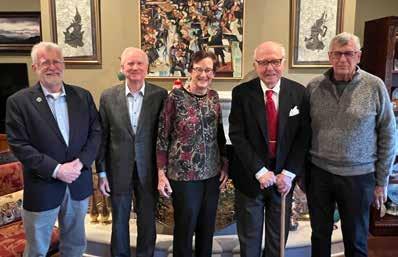
Distinguished Directors have lifetime board appointments in recognition of their commitment to the Asheville Symphony. Pictured here are Distinguished Directors Bill Gettys, Ed Towson, Carol McCollum, Tom Bolton, and newly elected Distinguished Director Jack Anderson.
Thank you to these distinguished leaders! We are profoundly grateful to all that they have done to promote symphonic music for the benefit, enjoyment and education of the people of Western North Carolina!
In memory of Drs. Martha Ann and Porter Claxton
Diana Bilbrey
Globuschutz Family
In memory of Katherine Armitage and Jack Jones
Diane and Rich Byers
In memory of Joy Bagley
Alyssa Feary
In memory of Chuck Briedis
Helen McClintock
In memory of Bill Burton
Diana Bilbrey
Tony McLean Brown
Bill and Kitty Hunt
Gerald and Nancy Kitch
In memory of John B. Campbell
Amy Campbell
In memory of our son Rikki Hall
Richard and Yolanda* Hall
In memory of Yolanda Hall
Richard Hall
Bill and Kitty Hunt
Manny and Karen Medeiros
Irene and Michael Stoll
In memory of Robert Hart Baker
Mr. and Mrs. John B. Lattimore
In honor of Clara McAfee Jeter
Dewayne McAfee
In memory of Doug Johnston
Frank and Judith Gale
Pat Johnston
In honor of Sally Keeney Anonymous
Mountaine Mort Jonas
In honor of Mary and Jim Kirby
Arthur Kirby
In honor of Klonis/Neelon Family
Andrea Canavan
In memory of Dr. Elizabeth Pierce Litteral
Bob and Martha Pierce
In honor of Carol McCollum
Reid, Alyson, Ellis, and Tess McCollum
In memory of Linda Medeiros
Manny and Karen Medeiros
In memory of Ingeborg Meeke
Irene and Michael Stoll
In memory of Maestro Dwight Oltman
Shirley Oltman
In memory of Jack Smith
Yvonne Smith
In celebration of Lorene Terrell
Jana and Chris Lechner
In celebration of Christopher Underwood
Carla Lema Tome
In honor of Ann Weinstein
Sara Peavy
Tuition covers less than half of the Asheville Symphony Youth Orchestra’s operational costs. Your gift empowers students to participate in performances, special workshops, retreats, masterclasses, and touring performances regardless of their economic circumstances. Visit AshevilleSymphony.org/friends-of-the-asyo to donate online today!
$15,000+
Keith Keener
Drs. Joanne and Tom Parker
$5,000 - $14,999
Gene and Lee Casey
Lynne and John Eramo
Bill and Nancy Gettys
Henry A. LaBrun
$2,500 - $4,999
Thomas C. Bolton
Jerry and Diane Cunningham
The Payne Fund
Sarah Van Gunten
$1,000 - $2,499
Diana Bilbrey
Blue Mountain Pizza
Jill and Joe Lawrence
Barbra and Keith Love
James S. Thompson
Steven and Michele Warner
$500 - $999
Mary and Jack Anderson
Michael and Catty Andry
Drs. Elizabeth and Josh Bernstein
Shannon Candler
Dr. John and Wendy Cuellar
Dr. Bolling Farmer
Erika Gifford and Sean Comeaux
Bill and Kitty Hunt
Jon and Ann Kemske
Jim and Mary Kirby
Terrence and Carol Tinkel
David and Dianne Worley
Roger Zare and Alexandra Dee
$250 - $499
Grace Chappell and Patrick O'Cain
Al and Betsy Gumpert
Susie and John Ruhl
$100 - $249
Asheville Symphony Guild
David and Sydney Atkinson
David and Ann Bottomy
Peter and Biruta Briedis
Bill* and Clarita Burton
Meredith Candler
Sylvia Cassel
Patricia Coldiron
Daniel and Caroline Crupi
Frederick and Cathy Detroia
Andrew and Jennifer Dukowicz
Jurgen and Leslie Dierks
Nancy and Ron Edgerton
Kim Eiring
Jennifer and Bruce Garner
Mary Goodkind
Ruth Hall
Fred and Heather Hudson
David and Pamela Lane
Mr. and Mrs. John B. Lattimore
Tom and Dian Leeper
Dr. and Mrs. Ralph C. Loomis
Sue and George Luther
Gail and Ron Manheimer
Aaron Maret
Carol and Hugh McCollum
Amy McGuire and Brian Wallace
Anne McKenzie
Chris McNabb
William O'Connell
Donna Robertson
Dorothy Sagel
Fran Sandfort
Shirley Steffen
Irene and Michael Stoll
Maurice and Bonnie Stone
Paul Stroebel
Kate Townsend and Michael Hawkins
Olivia and Gary Zahler

$25 - 99
Tate Addis
Ed and Pat Argue
Ned and Bunny Cabaniss
Andrea Canavan
Chick-Fil-A on Merrimon
Susan Evans
Alyssa Feary
Robin and Gordon Gaiser
Erika Gifford and Sean Comeaux
Clair Griffith and Geoffrey Mitchell
Rhonda and Marcus Grimes
Tom and Libby Irwin
Jill and Milton Lambert
James H. McMillan and Carol H. Kaufman
Margaret Murphy
The Peaks BLZ, LLC
Larry and Janie Wilson
*Denotes Deceased
A special thank you to Drs. Joanne and Tom Parker for their generous support of the ASYO this season. Their financial support will positively enhance music education for hundreds of students across Western North Carolina by providing scholarships, access to instruments, and opportunities for students to engage in chamber music and our annual retreat.
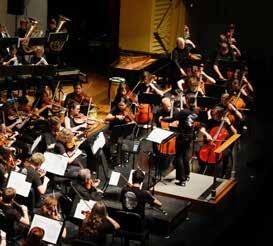

The Asheville Symphony Youth Orchestra (ASYO) is Western North Carolina’s premier orchestral training program, serving nearly 200 students ages 8-19 across four counties. With two string orchestras, two full orchestras, a beginner string class, a percussion ensemble, an honors string quartet, a brass quintet and a woodwind quartet, there’s an ensemble for every instrument and experience level.

These scholarships have been created to assist ASYO participants with tuition, ensuring that all students have equal access to the best musical training and resources that Asheville has to offer. Thank you to our generous donors!
Philharmonia Scholarship
Given by Keith Keener
Drs. Joanne and Tom Parker
Scholarship Fund
Given by Drs. Joanne & Tom Parker
Terrence and Carol Tinkel
Scholarship Fund
Given by Terrence and Carol Tinkel
Bu Scherf Memorial Scholarship
Michael Di Trolio
Lee and Sharon Metcalfe
Dr. Vance M. Reese
Charlene Scharf
Throughout the year, ASYO students have the chance to participate in masterclasses, retreats, and workshops, where they learn from professional musicians and guest artists alongside some of the best music educators in Western North Carolina. Through the ASYO, students grow as individuals, learn to work together as an ensemble, and gain everyday skills like perseverance, hard work, planning, self awareness, creativity, self evaluation and goal-setting.
YOUTH PHILHARMONIC & CONCERT ORCHESTRA RETREAT CONCERT
October 22, 2023 at 4:00 p.m. • Appalachian State University
A free concert where the members of the Youth Philharmonic and Concert Orchestra will perform side-by-side with the Appalachian State University Orchestra
WINTER CONCERT
December 4, 2023 at 6:30 p.m. • Asheville High School
Featuring Overture Strings, Divertimento Strings, Sinfonia Strings, Concert Orchestra, Youth Philharmonic Orchestra, and Percussion Ensembles
MID-WINTER CONCERT WITH NOAH BENDIX-BALGLEY
March 18, 2024 at 6:30 p.m. • First Baptist Church of Asheville
Featuring Overture Strings, Divertimento strings, Sinfonia strings, Concert Orchestra, Youth Philharmonic Orchestra, and Percussion Ensembles with violinist Noah Bendix-Balgley
SPRING CONCERT
April 29, 2024 at 6:30 p.m. • Mars Hill University
Featuring Overture Strings, Divertimento Strings, Sinfonia Strings, Concert Orchestra, Youth Philharmonic Orchestra, Percussion Ensembles, and various chamber ensembles
HONORS CHAMBER ENSEMBLES CONCERT
May 13, 2024 at 6:30 p.m. • Asheville High School
Featuring the ASYO percussion ensembles, woodwind, brass, and string honors ensembles
Concert dates and times are subject to change. Visit AshevilleSymphony.org/asyo to learn more about ASYO concerts and details on how to join the ASYO.




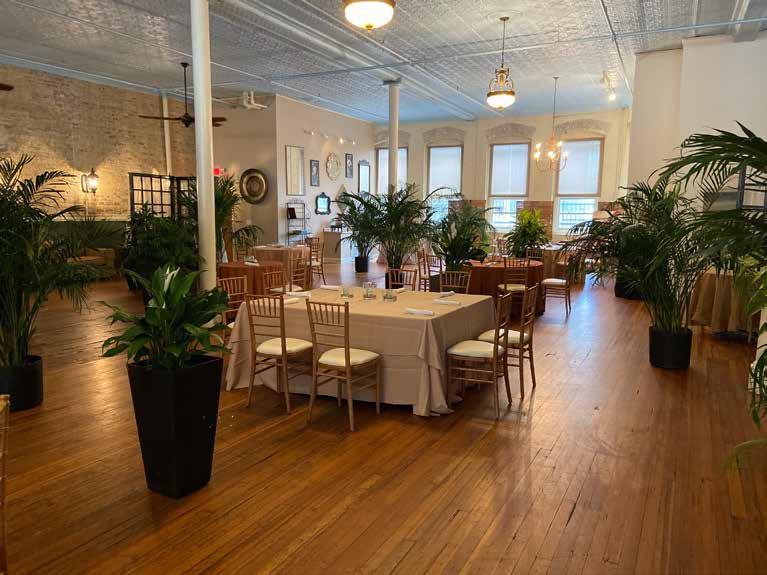
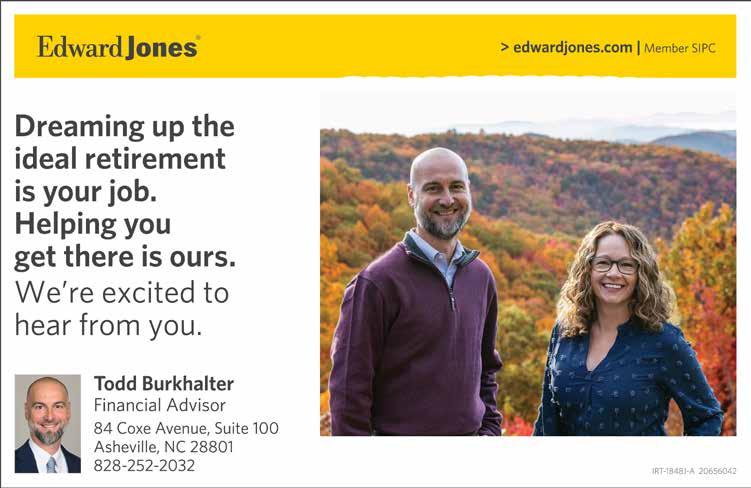







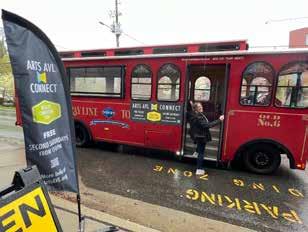
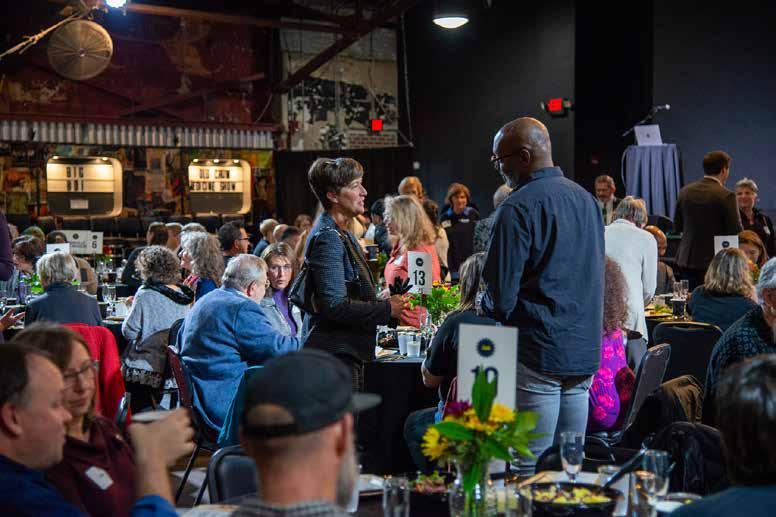

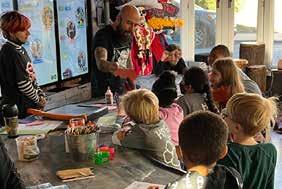

Dorel Abbott*
Don and Nancy Ackermann Cole
Jack Jones and Katherine Armitage*
Mr.* and Mrs. Stephen Barden III
Dr. and Mrs. Luther Barnhardt
Mary and Leland Bartholomew*
George* and Diana Bilbrey
Marion Bleyler*
Mr. and Mrs.* Thomas C. Bolton
Joyce Bost Hogan*
Mrs. Charles Butler*
Ken and Alma Chatfield*
Barbra and Beirne Chisolm*
Jane Christiansen*
Mr. and Mrs. Gary Coleman
Nancy Crosby
Dr. and Mrs. John Cuellar
Robert DiDiego
Lori Doerr
Mr. and Mrs. David Dolan
Drs. Joyce and Lawrence* Dorr
Mrs. C.H. Elmslie
Robert and Jeanne Etter
Dr. Linda Sokalski Farrell
Dr. Bolling Farmer
Francis Fee
Doris Kistler and Fred Wightman
William and Nancy Gettys
Lindley Garner* and Mary Goodkind
Mr. and Mrs. George Goosman
Michael J. Grillot
Paula J. Grillot
Mr. and Mrs. Steven Hageman
Dr. and Mrs. Matthew Hahner
Eleanor Hall*
Dick and Yolanda* Hall
Virginia and Emmet* Hayes
Anna and Anthony* Hayward
Bill and Kitty Hunt
Bill Jacobs and Susan Posey
Pat and Doug* Johnston
Mountaine Jonas
James Laird*
Christine Longoria
Dr. and Mrs. Carlo Mainardi
Mabel Marlsbury*
Mr. and Mrs. Arthur Mattson*
Carol and Hugh McCollum
Ann and Gerald McLellan
Ingeborg and Kenneth Meeke*
Fred Meyer
Russell and Ladene Newton
Arch and Zeffie Nichols*
Mr. and Mrs. David Pheil
Mary L. Powell Education Fund in memory of Beatrice Wells
Monte Richardson*
Ernest Rosenau*
Dr. and Mrs. Joel Rosenberg
William* and Carole Roskind
August Schmidt *
John Schuler*
Robert Sorton
Bonnie Stone
Norretta L. Taylor*
Edna Thompson*
Mr. and Mrs. Ed Towson
Albert and Lucia Ward*
Eleanor Weil Schulmon*
*Deceased
If you have questions or have already included the Asheville Symphony in your estate plans, please let us know so we can include you on this list by reaching out at 828.254.7046 or development@ashevillesymphony.org.

The Asheville Symphony Legacy Society recognizes members who have planned a gift to the Symphony in their will or estate plans. Make the Asheville Symphony a part of your legacy by investing today in the Asheville Symphony’s tomorrow. Your support will enable the Asheville Symphony continue to be a vital part of the community for generations to come.
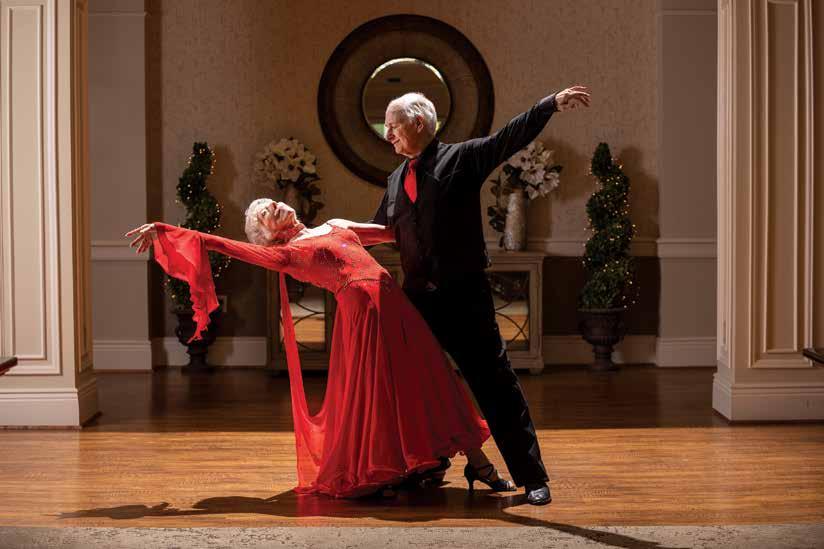


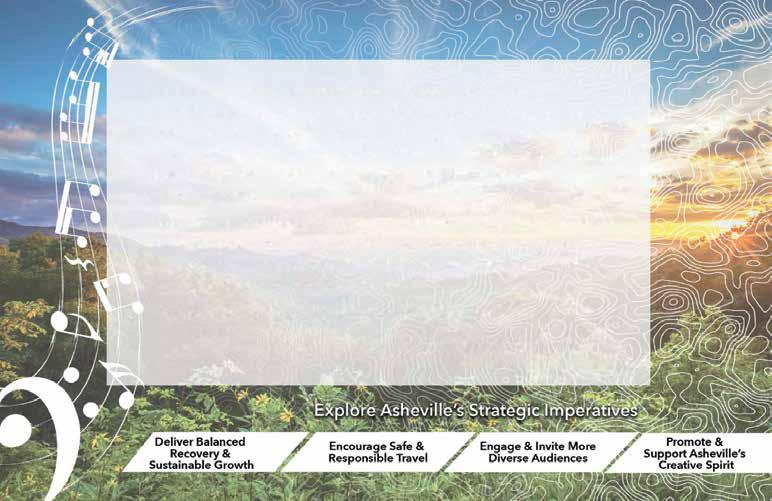
Explore Asheville is honored to support your mission and talent in capturing the heart of the people of Western North Carolina and its guests We are dedicated to shining our spotlight on the artists, makers, and musicians who help shape our community's distinct story. After all, we wouldn't be Asheville without artists like you.












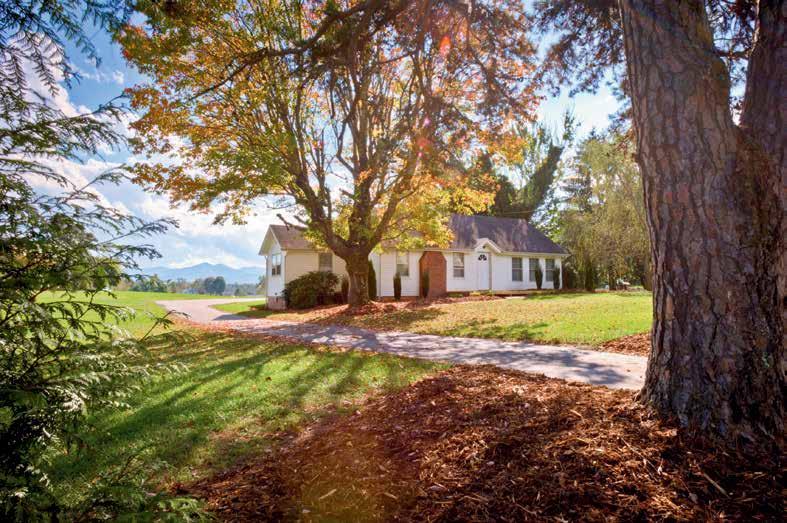

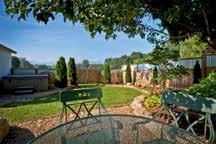

Farm
Rent
Short
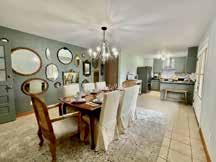
Asheville based, real estate focused private debt fund serving the Carolinas




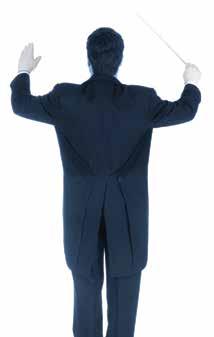


What Is ALFIE? ALFIE is a private debt fund established in 2015. Based in Asheville, NC, our fund works by pooling investor capital to provide short term construction and bridge loans to builders, developers, and real estate entrepreneurs in NC and SC.
How Does ALFIE Fit My Portfolio? An allocation to ALFIE can complement a traditional stock and bond investment portfolio. Our historically consistent returns have a low correlation with other investment options.
